FERRARI
RIMAC

PATEK


FERRARI
RIMAC

PATEK


The Executive Explorer: Lisbon p46

Revealing The All-New McLaren W1 p76

p02. Creating A Great Place To Work
p06. The Transformative Power of Kind Holidays
p08. Exclusive Interview: Lucia Penrod
p12. Exclusive Interview: Phillip Allen
p17. Foreword: Kate Mason
p22. Executive Profile: Greg Peters
p24. AI Is Remixing The Music Industry
p26. Exclusive Profile: Eva Longoria
p28. The AI Revolution In Entertainment
p30. Kate Mason Meets... Shaunagh Brown
p36. Formula E Championing Diversity
p42. F1 x LVMH - A Historic Partnership
p44. Exclusive Profile: Jody Gerson
p58. Luxury Dine & Stay At Northcote
p64. Hideaway At Forscroft Cottages
p66. Exclusive New Collection From Bentley
p68. New Hypercar From Rimac
p72. Ferrari Unleashes The F80
p80. Patek Philippe Releases New Range
p82. The New Seamaster Revision By Omega

EDITORIAL
Elizabeth Jenkins-Smalley Editor in Chief editorial@theexecutivemagazine.com
Alice Weil Business Editor
Jack Bell Lifestyle Editor
Aleks Bond Travel Editor
Molly Ferncombe Features Editor
Mike Jennings Food & Drink Editor
Aaron Kelly Art Director
SALES
Adam Busby Director of Strategic Partnerships advertising@theexecutivemagazine.com
Nathan Taylor Strategic Partnerships Lead
Elroy Oduor Business Development Manager
MARKETING
Bjorn van den Akker Marketing Director
Jack Salmon Subscriptions Manager subscribe@theexecutivemagazine.com
Elie Robbins Outreach Project Manager
MANAGEMENT
Francis Falodun Operations Manager
Ian McDonald Finance Director
COMPANY
©Executive Media Group Ltd
Studio 306 Bonded Warehouse Manchester, M3 4AP
Tel: 0208 1359 527
Company No. 14993504
VAT No. 444948655
The growing disconnect between employees and their workplaces poses a critical challenge for businesses today. New research reveals UK workers increasingly view their jobs as purely transactional, with engagement levels dropping significantly since 2019. With exclusive comments, Katie Whitehouse, who leads ServiceNow's global people team for EMEA, explores why culture sits at the heart of creating truly great workplaces

EEmployees in the UK are more likely to think of their work as purely transactional today than they were four years ago. The CIPD annual study – The Good Work Index–revealed that a significant proportion of UK workers say their experience of employment is getting worse.
What’s wrong with work?
Fewer people in 2023 than in the pre-pandemic 2019 survey said they found their work meaningful. They were also less likely to say that they would work harder for their employer and more inclined to disagree that work has a positive impact on their mental health. The proportion of people in 2023 viewing their work as simply a
means to earn a living, and nothing more, has risen since 2019. The number of people who said they’d work even if they did not need the money fell.
CIPD surveys bracketing the beginning of the pandemic and the world of work today, reflect broader attitudinal changes characterised by trends such as the ‘great resignation’ and ‘quiet quitting’. Both of these captured a disenchantment with conventional approaches to work.
At the same time, employers stress how talent is one of their most pressing needs, and its absence among the greatest risks they face. According to PwC’s 2024 CEO Survey, the majority of UK CEOs (78%) report some extent of skills shortage within their organisation, and 68% specify a lack of tech capabilities in particular as inhibiting their ability to transform.
How, then, should organisations think about the steps they need to take to attract the skilled talent they so urgently need, but just as importantly retain, nurture and develop the talent they already have? The consensus is that while remuneration and incentives are clearly important, for most people they’re not on their own nearly enough. Research by consultancy Accenture found that competitive financial rewards were just one factor motivating employees to achieve their true potential. Dimensions such as emotional and mental wellbeing; positive work relationships; physical wellness; feeling purposeful and enhanced employability through skills development all carried significant weight.
Study after study proves that employees who feel positive about the work they do – and crucially – where they do it, are more engaged and have higher levels of wellbeing and are therefore more productive and profitable. For example, a survey by The McKinsey Health Institute of more than 30,000 employees across 30 countries found that employees who had positive work experiences reported better holistic health, are more innovative at work, and have improved job performance. It’s no coincidence that companies which regularly make the lists of best places to work are also often among the best-performing across a wide range of metrics.
No organisation sets out to create an environment that makes employees unhappy or demotivated. But it’s also the case that many are simply failing to develop the workplace culture in which people feel sufficiently engaged, recognised and rewarded. ServiceNow research found that after low pay, the second most common reason for employees to quit their job was “incompatible culture”, cited by 42% of those employees who had left an organisation. Remarkably, culture accounted for higher scores than work-life balance, opportunities for advancement or lack of

job satisfaction.
Developing a culture that works
ServiceNow has been recognised globally as a great place to work across many different categories. Katie Whitehouse, who leads the global people team for EMEA at ServiceNow, emphasises just how important organisational culture is to achieve those results: “For me the culture that an organisation has is front and centre. Because it’s that culture that’s going to enable people to thrive or not, reach their full potential and help the company succeed.” Culture is made up of multiple elements, including organisational values, purpose and sense of mission. It’s also a concept that’s very hard to define. But one thing is clear: without the right culture, it’s not possible to be a great place to work.
For Katie, a strong culture does not mean uniformity or conformity. In fact, she says, it’s quite the opposite: “I don’t talk about people just becoming part of our culture, I talk about them as ‘culture adds’. It’s not about them coming into ServiceNow and being dipped in a ServiceNow paint pot. What really matters is the uniqueness that each individual can bring that’s going to help keep moving us along while staying true to our values.”
Respecting an individual’s authenticity sounds obvious enough. But in an organisational setting it’s rarely so straightforward. Katie believes that it’s important to emphasise that people need to “bring their best professional authentic selves to work, because there’s always a professional front door that you need to walk through when you come into work.”
However, Katie also stresses that a key element of ServiceNow’s approach is “to celebrate the whole person, not just the part of them that needs to do the role you’ve employed them for.” Part of achieving that is empowering individuals to work in the way

that suits them best. That’s recently become a hotly-disputed subject as some organisations mandate a full-time return to the office. For Katie, however, “leading with trust and flexibility is fundamental to driving performance and productivity. What’s good for people is good for the organisation. And we trust our people to do their roles.”
Victoria Poku, a solution design consultant at ServiceNow, explains why this matters to her: “We operate in a very resultsdriven organisation. But how you achieve those results is largely up to you. No-one is telling you that something has to be done a particular way. I don’t feel that I’m being forced into being something that I’m not.”
Autonomy and independence clearly matter to empowering employees. But the right support networks and a culture that encourages and facilitates those needing help to find it are also essential. As Victoria says: “Everyone understands that you can’t know everything. I have independence and I’m able to use my strengths, but there’s always access to the right person to help with a specific issue as well as resources that enable you to skill up in the areas you need.”
That support also needs to extend across the whole employee experience, according to Katie Whitehouse. And it’s particularly important to offer the right support at what Katie calls “the moments that matter.” She explains: “Anybody that joins us at ServiceNow, is on their own journey. At various points, from onboarding to reward, learning and development and so on, they’re going to need a service from us. And that’s where in terms of the employee experience, organisations really need to think about how they set themselves apart. It’s essential to provide a personalised experience that demonstrates you know that employee and what they need in those moments that matter.”
DEI
Taking account of the whole person and their specific needs is, of course, also at the heart of diversity, equity and inclusion (DEI). Related policies and pronouncements proliferated with the rise to public attention of issues surrounding race, gender norms, sexuality and disabled accessibility. But writing a policy is very different to making the commitment to change that true DEI
requires.
Chloe Hole, a strategy director at ServiceNow, explains her experience: “Many organisations has a little rainbow flag on their website, for example, but the lived experience of that organisation can feel very different. As a gay woman I want to feel comfortable being out at my workplace, and know that I’ll be afforded the same opportunities as anyone else in a supportive environment. We have a highly visible Pride employee belonging group (EBG) at ServiceNow, and that’s had a very positive influence on some LGBTQ+ policies, for example. But there’s also an openmindedness and willingness to make changes more broadly that help reinforce what it means to be a truly inclusive organisation.”
Chloe explains how seemingly simple things can make all the difference. The Pride group at ServiceNow pointed out that the ‘dead’ names of employees who’d transitioned gender still showed up on some company systems – an upsetting experience for those affected. When it was pointed out, comprehensive changes were made. “It shows”, says Chloe, “quite strikingly that certain things don’t have to be a big deal but can have a big positive impact. There’s a real ‘get it done now’ attitude which I really like.”
Continued success, for both employees and the organisation they work for, depends on being able to change and adapt in line with new contexts and challenges. Being a great place to work is a constantly moving target. And culture has to change with it.
According to Katie Whitehouse, the key to staying ahead is being “really intentional about the culture you want to create and having clarity about the things you want to change, evolve and improve. Part of being a great place to work is listening to people to get the intelligence about how to make things even better. There’s always something more to do.”
ServiceNow EXECUTIVE CIRCLE is a community of industry experts, visionaries and leaders who activate and shape business strategy from the world’s most innovative organisations. Explore events, networking opportunities, articles, and podcasts online.
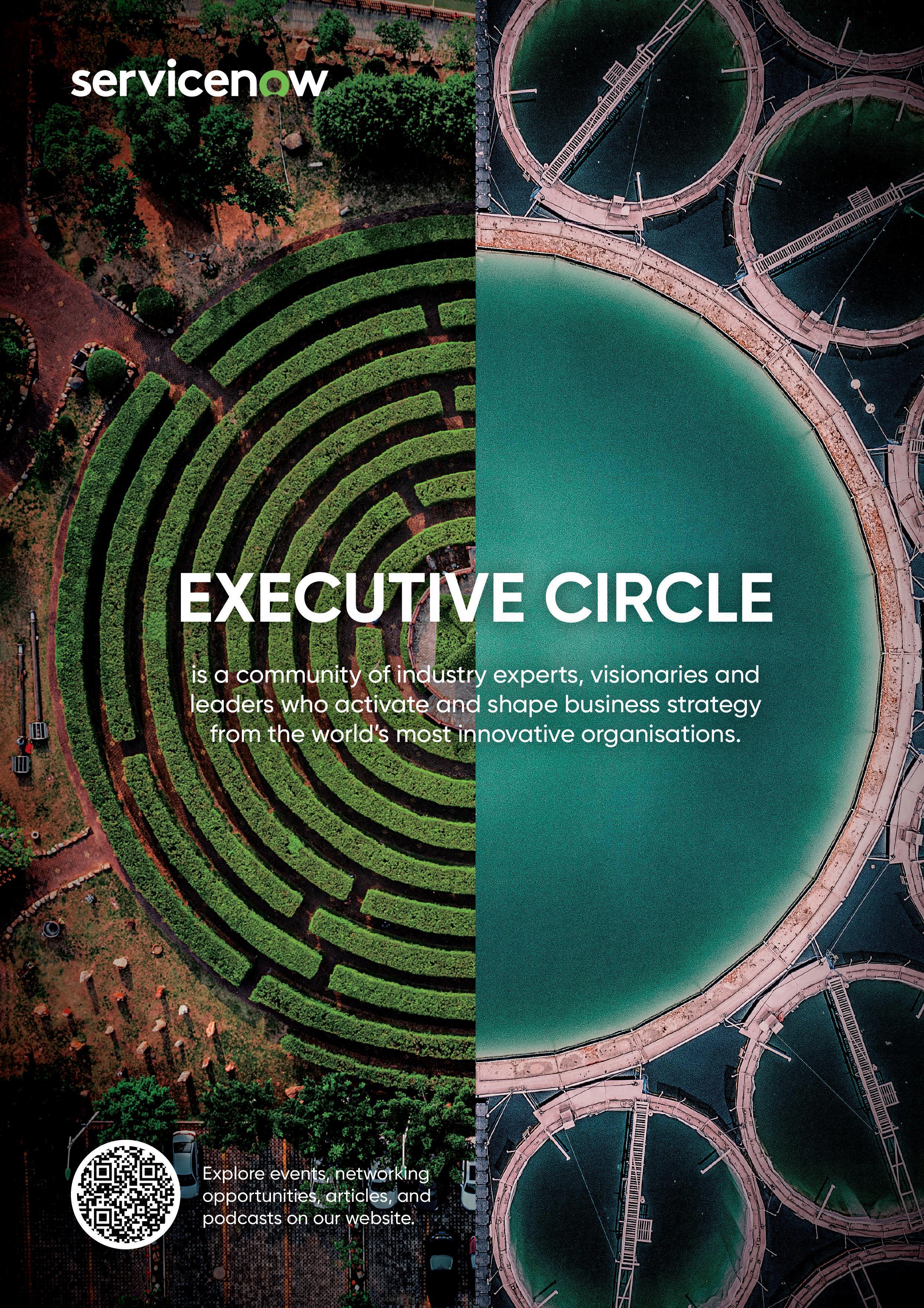
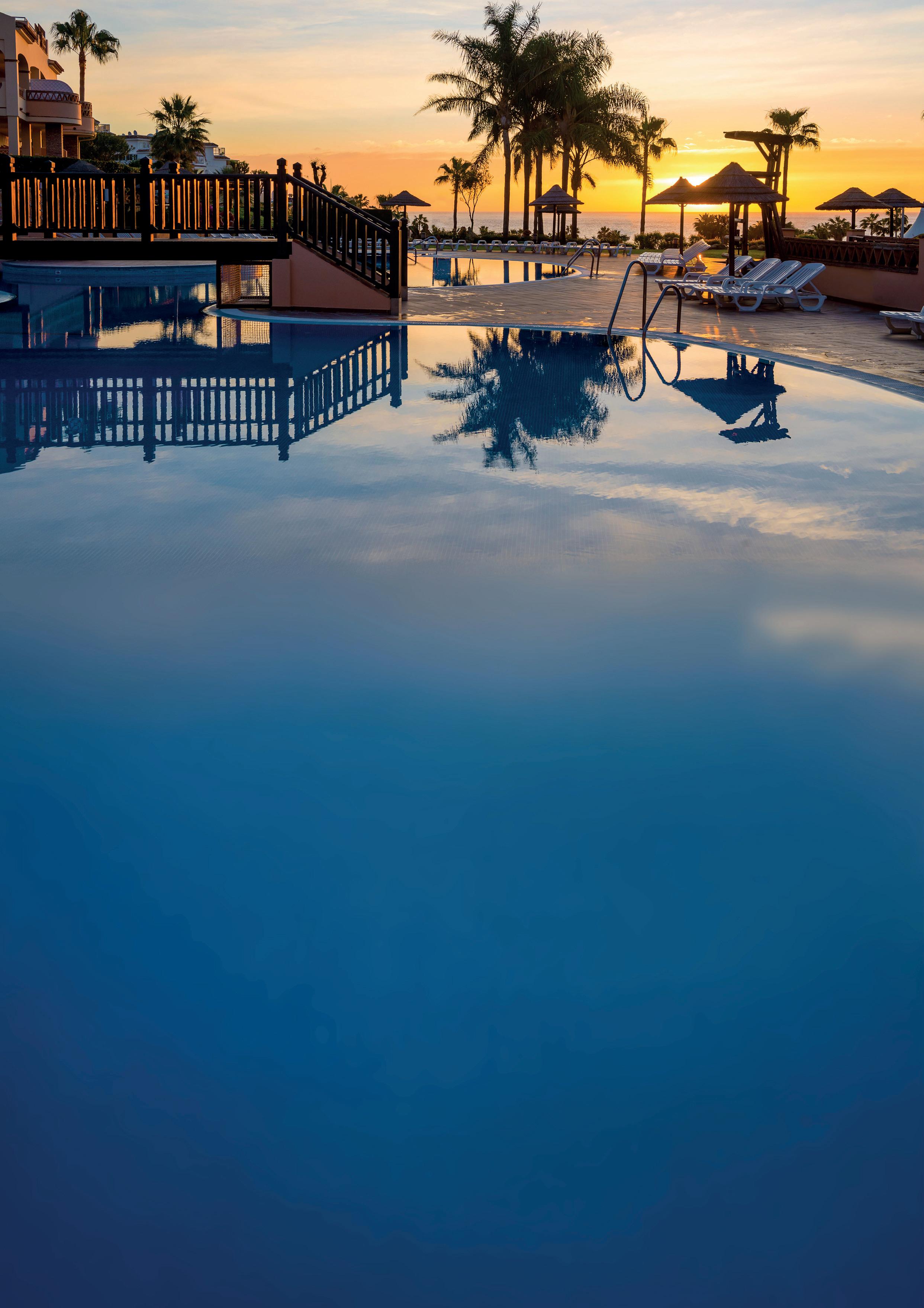
Speaking exclusively to The Executive Magazine, Grant Peires, Director of Communications at IDILIQ Hotels & Resorts, reveals how the hospitality industry's next revolution isn't about thread counts or infinity pools - it's about purpose. As the architect behind 'Kind Holidays', an initiative that's sending ripples through the luxury travel sector, Peires presents a bold vision where profit and social impact don't just coexist, they flourish together. This candid conversation uncovers how one of Europe's leading resort groups is rewriting the rules of hospitality, and why they're now urging their competitors to join them
Through the sun-drenched corridors of luxury resorts and behind the polished façades of fivestar hotels lies an untold story of transformation. Grant Peires reveals how the hospitality industry's next revolution isn't about thread counts or infinity pools - it's about purpose.
The Kind Holidays program emerged in 2012 when IDILIQ became one of the first donors to Give Us Time, a charity founded by former Defence Secretary Sir Liam Fox supporting military personnel. By 2016, they had expanded their reach dramatically, partnering with charities supporting terminally ill children, bereaved families, and those needing accommodation near hospitals for extended treatments.
Since joining the hospitality sector in 1988, Peires's journey began in Northwest London as an estate agent. When soaring interest rates froze the UK market, he pivoted to selling Spanish holiday properties, drawn by the allure of "selling sunshine and holidays" during challenging economic times. Now, as Director of Communications at IDILIQ Hotels & Resorts, his role encompasses both real estate and hotel promotion across properties in the Costa del Sol, Tenerife, Orlando Florida, and the UK.
The evolution of his career mirrors the transformation of the hospitality industry itself. "The hospitality landscape has shifted dramatically," Peires observes, "with travellers increasingly seeking more than just a beautifully designed space. They are looking for a seamless blend of comfort, flexibility and top-quality service."
"Within 18 months of bringing on-board a dozen new charities, I started to see the positive effects our programme was having not just on the recipients of the holidays but on our own team," Peires explains. This realization sparked a larger vision: to transform the entire travel sector through purposeful giving.
The program's implementation wasn't without its challenges. "The challenge for me personally has been time management and making sure that my eye is on our commercial endeavours, as much as it is on our altruistic ones," Peires admits. However, the results quickly justified the effort.
The impact on company culture has been profound. During a recent summer gathering at Wyndham Costa del Sol, over 300
team members heard first-hand accounts from holiday recipients. Former soldier Scotty Darroch shared how a stay at their resort a decade ago helped him overcome PTSD and addiction. Sarah Sea, a single mother, spoke about precious memories made with her son Phoenix, who had lost all motor skills at age three due to a rare genetic disorder.
"Many members of our team were touched first-hand," Peires recalls, "like the Porter who woke up very early in the morning, off his own back, to help wheel Phoenix in his adapted wheelchair onto the beach, to watch the sunrise with Sarah and Rico."
These experiences have created a ripple effect throughout the organization. Staff retention has improved, productivity has increased, and there's a palpable sense of purpose that permeates every level of operations. "It is impossible for you not to feel proud of what you are doing and who you are working for, when you can see first-hand how much of an impact we are having on the most challenged members of our society," Peires notes.
The initiative's primary cost - housekeeping for off-peak rooms - is far outweighed by improved staff morale, increased productivity, and enhanced retention rates. "Being told by colleagues 'how proud they are to work for a company that does what we are doing' has fuelled my determination to bring this to the rest of our industry," Peires notes.
IDILIQ's experience demonstrates that social responsibility and profitability aren't mutually exclusive. In fact, their charitable initiatives have become a key differentiator in a competitive market. The company has found that purpose-driven operations attract not only grateful recipients but also conscientious travellers who actively seek out socially responsible businesses.
Looking beyond individual properties, IDILIQ has positioned itself at the forefront of evolving consumer expectations. The hospitality landscape has shifted dramatically, with travellers increasingly seeking meaningful experiences and purpose-driven brands. The company's four decades of expertise in managing aparthotels has enabled them to create communities that cater to diverse needs, from family holidays to digital nomads' extended stays.
"Increasingly we see the traditional peak holiday seasons being less relevant as hybrid working brings more travellers seeking longer stays and work-from-anywhere options," Peires observes. "Properties that offer seamless living, working, and leisure experiences will thrive."
As Kind Holidays launches officially on World Kindness Day, Peires envisions it becoming a central repository for the entire travel sector. "My hope is that Kind Holidays might grow into a charity where all hoteliers, airlines, cruise ship operators, restaurants, and taxi companies can donate their space or services. Until this dream becomes a reality, we are campaigning for others in our sector to use www.kindholidays.com as an open-source guide on how they can set up their own charitable programmes."
The initiative has already begun to demonstrate its versatility.
"Hotel accommodation does not necessarily need to be used just for holidays," Peires explains. "For example, hotels that are located near large children's hospitals can donate space to families, where a child is receiving treatment for several days or weeks and the family home is too far away from the hospital for the parents to be able to commute."
The initiative's impact is perhaps best illustrated through the words of their guests. Alistair Witham, whose daughter Katie has chronic kidney disease, wrote after their Orlando holiday: "The memories we created as a family during those two weeks are beyond precious. They serve as a reminder to Katie and all of us that life extends far beyond hospitals, medicines, and treatments."
Such testimonials underscore the profound impact of these experiences. "As a father of two myself," Peires reflects, "I hug my kids harder, tighter and longer than I would have, had I not been lucky enough to be involved with Kind Holidays."
For Peires, success in today's hospitality industry requires two essential qualities: empathy and sociability. "With empathy, you can see what brings your customers joy and it allows you to focus and expand on it. One of the keys to our 40-year success is treating our customers like family, really embracing them, like they are our own."
This approach has led to unique relationships within their properties. "Many of our team members have been with us for decades," Peires shares, "and it gives our long-standing customers a sense of continuity and community. We have even had instances where team members go on holiday together with customers that have become friends."
Looking ahead, Peires hopes the program becomes as fundamental to hospitality as sustainability initiatives. "I hope we lose this challenge because all our competitors are doing something similar," he admits candidly. "Eventually, my goal is that Kind Holidays is no longer required to spread the word, as it has become a standard and integral part of the sector."
His advice for other leaders contemplating similar initiatives is straightforward: "It's much simpler than you might imagine to institute. Rather than a negative on your balance sheet, it improves it, due to the decrease in cost of recruitment and increase in staff productivity and retention. Once you begin, you will never look back!"
The future of hospitality, Peires believes, lies in this blend of purpose and profit. As consumers increasingly seek meaningful experiences and socially responsible brands, initiatives like Kind Holidays may well become the new standard for success in the industry.
Peires concludes with a passionate plea that encapsulates both the business case and moral imperative for corporate kindness: "Let's build a kinder world together, one holiday at a time. Please open your hearts and doors to the most wonderful and grateful guests you could ever imagine."

The Executive Magazine speaks with Lucia Penrod, the visionary force behind Nikki Beach Hospitality Group, whose story proves that the most powerful businesses can emerge from the deepest love. What began as a heartfelt tribute to her stepdaughter Nicole has blossomed into a global luxury empire, redefining beach club culture from Miami to Montenegro
LLucia Penrod, Owner, Co-founder & CEO of Nikki Beach Hospitality Group, shares the extraordinary journey of transforming personal tragedy into a global celebration of life. From its poignant beginnings as a butterfly garden honouring her stepdaughter Nicole, to its evolution into one of the world’s most recognized luxury beach club brands, Penrod reveals the intimate story behind the white teepees and international acclaim. She discusses the challenges of expanding across continents while maintaining authenticity, her perspective on female leadership in the hospitality sector, and the brand’s latest ventures.
Nikki Beach has grown from a single location to a globally recognised hospitality brand. What key strategies and values have been most instrumental in expanding the brand while maintaining its identity and appeal across diverse markets?
“Let me start by giving some background on my husband, Jack Penrod, and how we met and began working together. Jack’s beginnings were humble, working his way up from a line cook at McDonald’s earning $.85 an hour as a teenager to becoming one of the largest franchise owners within the corporation. His entrepreneurial spirit led him to open several bars and restaurants in South Florida. In 1984, I moved from Nicaragua to Miami and worked for the diplomatic field in Miami, with the governments of South Korea and Venezuela and shortly afterward joined Jack’s organization to manage the prestigious Jockey Club of Miami. Our partnership strengthened over the years, with me taking on roles such as Project Manager and later PR Director during the opening of Penrod’s Beach Club at the iconic address of 1 Ocean Drive in Miami Beach. Our professional and personal life converged and in 1995 we got married.
“A profound turning point for us was the tragic loss of Jack’s 18-year-old daughter Nicole who passed away in a car accident in 1997. Rather than mourning her life, we decided to celebrate her life by transforming the pool area at Penrod’s into a beautiful butterfly garden named Cafe Nikki in her honour. The garden’s success and the encouragement from our guests inspired us to expand the concept onto the beach. In 1998, we launched the first Nikki Beach, a venue that embodies the philosophy of “Celebrating Life,” combining the elements of music, dining, entertainment, fashion, film and art among all white décor, teepees, and international cuisine, all designed with Nicole in mind. We never intended to build a global brand but this concept quickly resonated with our guests and at their request we expanded to Saint Tropez, then Saint Barth, and eventually opened locations around the world.
“Our key business strategy has always been very simple: “listen to your customers and give them more of what they want. But truly listen.” Our commitment to “Celebrate Life” every day with friends and family is our authentic purpose for the company and in our personal lives. We don’t create tag lines for marketing purposes. Our business was not born in a boardroom, it was born out of family love. Authenticity in our business is key to maintaining customer loyalty. Our staff are a part of our family and the emotional connection between us trickles down to our customers. We provide our guests with an unmatched atmosphere where they can feel like part of a global community in luxurious, yet unpretentious settings.
“This integration of barefoot luxury and lifestyle, coupled with our consistent focus on high-quality service and maintaining a connection to local cultures, allows us to offer a distinct experience that you can’t find anywhere else.”
You’ve been a pioneering force in the beach club and luxury hospitality sector for decades. What unique challenges have you faced as a woman leading this kind of enterprise on an international scale, and how have you overcome them?
“I’ve encountered many challenges, particularly in an industry where leadership has traditionally been male-dominated but honestly, I never gave it too much thought. (One of the most valuable lessons I’ve learned is the importance of embracing my unique strengths and perspectives). Sometimes we get caught up in the narrative that to succeed in business, we have to adopt established attitudes and behaviours to prove our worth. Through my years doing business in different countries and cultures around the world, the most valuable lesson I’ve learned is to show up just being me. I knew my strengths and perspectives and I embraced them with authenticity. My advice to fellow female leaders is to trust in your vision, embrace your womanhood and not shy away from taking risks. It’s this boldness that helps carve out new paths.
“Authenticity is key. Don’t try to fit in someone else’s mould. Embrace what makes us different because there is room for both sexes in the business world. We bring different perspectives and when you can find the right environment to foster this formula, your business becomes unstoppable. And if someone doesn’t appreciate your talents, just move on. Don’t dwell on bad experiences. The world is full of opportunities.
“Building a strong support network has also been crucial. I’ve created an environment where all voices contribute to our success — a key element for thriving in different markets around the world. Staying adaptable and resilient has been essential, especially with the constantly evolving business landscape.
“Above all, the fun is in the journey, not the destination. My journey has been deeply rewarding as it allows me to break barriers while empowering the next generation of women in business. (I’ve found that prioritizing self-care and balance sustains the passion and energy needed for the long journey. Remember, success is not just about personal achievements, it’s about inspiring and paving the way for others. This journey has been deeply rewarding, as it allows me to break barriers while empowering the next generation of women in business.)”
In recent years, we’ve seen a surge in lifestyle brands merging hospitality with wellness, sustainability, and experiential elements. How is Nikki Beach evolving to meet the expectations of today’s luxury consumers, and what trends do you see shaping the future of the industry?
“Nikki Beach has always been an experiential brand, centred around our six core elements: music, dining, entertainment, fashion, film, and art. This holistic approach has allowed us to create immersive lifestyle experiences that deeply resonate with our guests. As luxury consumers’ expectations evolve, so has Nikki Beach, embracing wellness and sustainability as part of our offerings.
“All of our resorts include expansive wellness facilities, like Tone Gym and Nikki Spa, and many of our beach clubs have hosted

wellness events like yoga, pilates, sound baths and cold plunges on the beach. Looking ahead, I see the future of luxury hospitality shaped by several key trends. Personalization is increasingly valued, with guests desiring experiences tailored to their individual tastes.
“Sustainability is also at the forefront, as travellers demand ecoconscious practices and responsible development. Wellness is expanding beyond the physical to include mental and emotional well-being, a priority we are embracing in our approach. Additionally, cultural authenticity has become essential, with guests seeking genuine local experiences that reflect the character of each destination.”
In addition to overseeing Nikki Beach’s global operations, you’re deeply involved with Nikki Cares and the Fabretto Foundation. How has your philanthropic work influenced your leadership style and the way you approach business decisions?
“Philanthropy is woven into the very fabric of who we are at Nikki Beach, and it has deeply influenced how I lead and make business decisions. I see our brand as a platform not only for global celebration but also for positive impact, and that perspective guides how we create experiences, support communities, and engage with our team.
“Our properties support many local charities and initiatives, especially those dedicated to preserving the beauty of our beaches and oceans. Protecting our surroundings and giving back to the communities that host us is a core value for us. This commitment to our planet and communities keeps us grounded, ensuring that our impact is as positive and meaningful as the experiences we create.”
For aspiring entrepreneurs in the luxury and lifestyle sector,
what do you believe are the essential qualities and skills needed to succeed in this competitive and dynamic field?
“Passion. You have to leave your ego at home because our business is all about our customers. Our job is to create unforgettable experiences they can take back home and endear them to us for the rest of their lives. And you cannot do this if you don’t truly believe in our purpose. Since opening, our family made the commitment to enjoy every day to the fullest and apply this way of thinking to our business life as well.
“Our motto is to wake up every day and say your blessings. Be thankful for being alive and well and make a conscious decision to celebrate life today – and make it contagious. I truly believe that Nikki Beach wouldn’t be where we are today without our love for Nicole that still runs through the business. I’m always an advocate for making connections across industries.
“A huge part of our expansion and innovation has been tied to our relationships with other businesses. We’ve always worked closely with the music, film and television industries – from our early days when celebrities such as Leonardo DiCaprio visited Nikki Beach Miami Beach, to this year where we hosted a number of movie premiere afterparties at Lucia Cannes during the Cannes Film Festival.”
Your journey began in Miami with the management of highprofile venues and eventually led to the creation of Nikki Beach. Reflecting on this path, what are some pivotal moments or learning experiences that you feel defined your career and shaped your vision as a CEO?
“Although my career began in Miami, I was actually born in Nicaragua. My latin roots are all about the importance of family, friends and fun. This was instilled in me at an early age. When I moved to Miami I worked for the Diplomatic Corps in the city, serving the governments of South Korea and Venezuela – a unique experience that gave me a different perspective of the world.
“A pivotal part of shaping Nikki Beach’s unique identity came from my time working in marketing and PR. This period showed me the importance of making Nikki Beach a name that resonates with the right people. We’ve always focused on engaging with tastemakers and world travellers, creating exclusive, unforgettable experiences. We chose not to advertise in the traditional sense but to go the organic way of “Tell Only your Best Friends” which became our company motto. We chose to rely on the magic of word-ofmouth and those in the know to keep Nikki Beach special.
“Travel is a huge part of our lives too, which has helped us with our expansion across the world. Jack and I both love being outdoors on the coast, which has inspired our choice of Nikki Beach locations.”
The hospitality industry is famously challenging, with its seasonality, diverse client expectations, and complex logistics. How do you approach maintaining operational consistency and innovation across Nikki Beach’s global locations?
“We never take our customers for granted. We are honoured and grateful they want to spend their days with us knowing that choices are abundant in our industry. And, we listen carefully and give them more of what they want. We look at our seasonality and expectations of our clients as an advantage to us.
“Some of our beach clubs are only open for a few short months of the year, but we use the off season to refine and rework our offering from year to year – ahead of this summer we completely renovated our Ibiza and Saint Tropez locations and our collaborations with Givenchy and Tory Burch this summer also gave our audiences something new and fresh.
“A huge number of visitors to our locations are repeat customers, who look forward to seeing what innovations each new season brings. We also see variation across our global locations as an advantage, not a challenge. Each of our beach clubs and resorts is unique, in line with their destination – our Costa Smeralda beach club is more laid back luxury, only accessible by boat; the Koh Samui Resort & Spa is more family and wellness focused; and Monte Carlo has more of a metropolitan feel, away from the beach.
“Of course, the Nikki Beach standard of hospitality is present throughout our locations and our global teams have the privilege to regularly visit each of the locations to ensure this is consistent.”
As the leader of a global brand, you are responsible for fostering company culture across multiple countries. How do you manage to instil a unified culture that resonates with local teams and guests alike, while respecting the unique qualities of each market?
“We are an experiential brand that has grown organically. Experiences touch your emotions and our goal is to make everyone happy. Our staff believes in their mission. Throughout the years, we have built a beautiful culture around happiness. Every new hire is embedded in our culture and every year, we hold conferences to remind each other of our purpose and keep building a strong bond between each other. We have our own Nikki Beach family.
“We created 6 pillars of marketing that are present in every location every day – Music, Dining, Entertainment, Fashion, Film and Art. What these elements have in common is human emotions. We work with our five senses, weaving them throughout the day to create the Nikki Beach magic. Most of our seasonal staff return year after year, and we have a large number of staff who have been part of the business for 10, 15 or even 20 years.
“Our staff truly love and believe in Nikki Beach which helps to create our unique service and atmosphere. A large portion of our staff also work across various locations, taking their learnings and knowledge with them from continent to continent. This then blends with local staff who have grown up in the destination and contribute their experience of hospitality and their personal recommendations within the region.”
Looking ahead, what new opportunities or unexplored markets do you believe hold potential for Nikki Beach’s continued growth, and how do you plan to tap into them while staying true to the brand’s ethos?
“The launch of Nikki Beach Hospitality Group’s latest brand, Lucia, this year was hugely exciting for us and has opened up a new path for the business. We really wanted to set Lucia apart from its sister brand Nikki Beach – so we went with the opposite to Nikki Beach’s minimal design, embracing maximalism with lively colours, intricate patterns, wall murals, unique glassware and bold, bright ceramics.
“Our commitment to hospitality and experiences remains the same though! Our Nikki Beach expansion is very exciting and thriving. We are in constant search for new locations in up and coming destinations to keep wowing our customers. Our next additions to our portfolio are the upcoming openings in Muscat, Oman; Baku, Azerbaijan; Antigua, Caribbean; and Ras Al Khaiman, UAE.”
In your view, what are the most pressing challenges facing the luxury hospitality sector today, and how is Nikki Beach positioned to navigate these in the coming years? Additionally, what advice would you offer other leaders looking to adapt and thrive in this ever-evolving industry?
“In recent years, sustainability has become less of a nice-to-have, and is now expected within the industry. Any hospitality companies that haven’t built sustainability into their business will struggle. We do this across Nikki Beach Hospitality Group in various ways –everything from working with local produce suppliers to minimize food miles to bio-labelled wines and plastic waste reduction.
“Staffing is also a potential challenge for businesses. It’s harder than ever to retain experienced staff, so all hospitality leaders should make their employee satisfaction and wellbeing a top priority. At the end of the day, people shape the guest experience, and having team members that are skilled and happy within their roles is crucial for success.”


The Executive Magazine speaks with Phillip Allen, CEO of Marine & Lawn Hotels & Resorts, about his unconventional path from corporate lawyer to luxury hospitality leader. In this exclusive interview, Allen reveals how "dumb luck and good timing" transformed his career from legal counsel at Yum Brands to spearheading some of Scotland's most distinguished golf destination properties

IIn an exclusive interview with The Executive Magazine, Phillip Allen, CEO of Marine & Lawn Hotels & Resorts, reveals how a fortuitous phone call in 2009 sparked his remarkable journey from corporate legal counsel at Yum Brands to becoming a driving force in luxury hospitality. Now at the helm of some of Scotland’s most prestigious golf destination properties, Allen shares candid insights about building the Marine & Lawn brand during the pandemic, the delicate art of preserving authenticity while scaling operations, and the unexpected challenge of becoming a golf industry expert
Your career has seen a dynamic evolution from legal counsel to leading luxury hospitality brands. Can you share key experiences that shaped your journey from law to entrepreneurship in the hospitality industry?
"It was really a matter of dumb luck and good timing rather than strategic planning. Two pivotal phone calls stand out. In 2009, Craig Greenberg, who's now Mayor of Louisville, called me while I was working as in-house counsel at Yum Brands. He was advising 21c Museum Hotels' founders and asked if I'd join as General Counsel. Though initially hesitant to leave a successful global restaurant company for a single-property hotel business, I took the leap in 2010. Over eight years, we expanded to ten hotels while my role evolved from legal counsel to head of investments and development.
"The second crucial call was one I made to AJ Capital's founder Ben Weprin in 2018. We were finalizing 21c's sale to Accor Hotels, and I was impressed by their Graduate Hotel brand. After a halfday of meetings in Chicago, I knew I wanted to join. I proposed four initiatives, including international expansion of the Graduate platform – which became my focus."
As President of Marine & Lawn Hotels & Resorts, how do you balance the brand's commitment to authenticity with the demands of scaling and expansion?
"These elements actually complement each other rather than compete. Marine & Lawn's identity is deeply rooted in the history, myths, and traditions of our chosen locations. We maintain authenticity through every aspect of operations – from locallyinspired design to messaging, staff training, and community partnerships. Our goal is for guests to feel they're somewhere specific, not anywhere, while becoming fully integrated into local communities.
"This commitment to authenticity actually creates expansion opportunities, as stakeholders recognize our genuine approach. While we're growing, our expansion remains measured and strategic. The nature of our target markets and desired properties means we can't rapidly multiply locations, which allows us to maintain our standards while growing thoughtfully."
From your experience leading the international expansion of both Graduate Hotels and Marine & Lawn, what are some specific challenges you've encountered in identifying and integrating properties in new markets?
"When I first arrived in the UK in late 2018, I was AJ's sole employee there, with minimal prior exposure to the country. As an American bringing a brand overseas, I had to quickly understand British culture and hospitality traditions. For Graduate Hotels, we discovered that university alumni relationships differ significantly between countries – U.S. athletics drive much alumni nostalgia, while UK universities are often integrated into historic towns with diverse demand drivers.
"Building Marine & Lawn during COVID-19 presented unique challenges. We acquired Rusacks St Andrews in late 2019, followed
by North Berwick in early 2020. I made a handshake deal for our Troon property just as the pandemic emerged. Though initially uncertain, we conducted renovations during forced closures. Unexpectedly, COVID sparked a golf boom, creating strong demand upon opening.
"I also found myself unexpectedly deep in the golf business, despite being more of a casual player. Learning to think and speak like a serious golfer while still struggling to break 90 has been an ongoing challenge."
During your time at 21c Museum Hotels, you were pivotal in its acquisition by Accor Hotels. What insights did that experience give you on navigating acquisitions, and what advice would you offer to leaders preparing their companies for a strategic sale?
"Patience is crucial – more deals fall through than succeed, and it's not devastating if your first exclusive negotiation fails. You must maintain peak business performance during negotiations, as another opportunity might arise if the first fails. Only work with people you trust and respect, as strategic sales can extend for years – life's too short for difficult partnerships.
"Start professionalizing your business before due diligence begins. Organize financial statements, ensure ownership interests are properly documented within correct legal entities, and establish appropriate HR policies. Address the details that may have been overlooked as a startup but that mature potential buyers will scrutinize."
With more businesses now focused on creating immersive, place-based experiences, how do you see the future of destination and boutique hospitality evolving, and what role do you envision Marine & Lawn playing in that landscape?
has been fundamental. Their CEO David Novak was passionate about celebrating employee accomplishments, creating remarkable positive energy throughout the organization. I've carried this practice forward, finding that public acknowledgment of achievements builds team cohesion and loyalty across all hospitality sectors."
Entrepreneurialism in hospitality often requires a blend of innovation and risk management. What risks have you taken that have defined your career, and how do you assess potential risks when planning future growth?
"Unusually, I've taken more risks later in my career than at the start. Beginning at a New York law firm provided a risk-averse foundation. The dot-com boom and bust proved formative –watching young entrepreneurs succeed and fail taught me that intelligence, integrity, and hard work ultimately prevail in advanced democracies. This gave me confidence to take calculated risks, like leaving a major restaurant brand for a small hotel company."


"We're fortunate to have a team dedicated to connecting guests with local heritage and character. Recent research shows 89% of travellers, especially younger generations, prefer exploring local hidden gems over tourist hotspots.
"We're responding with innovations like Room 116 at Rusacks St Andrews, partnering with The Glendronach Whisky to celebrate both Scotland's whisky heritage and legendary Open Champions. Our Marine & Lawn Grand Tour offers full-service VIP golf experiences combining accommodation, activities, meals, and excursions for an authentic Scottish and Northern Irish adventure."
You've worked with iconic brands like KFC and Long John Silver's, alongside boutique hotels and luxury properties. What common leadership principles have you applied across these varied sectors, and how have you tailored your approach for luxury hospitality?
"Employee recognition, a principle I learned at Yum Brands,
For aspiring leaders in the hospitality industry, what qualities do you believe are essential to achieve sustainable growth, and how can they best prepare for the unique demands of leading in this sector?
"Success requires hands-on experience, adaptability, and strong communication skills. As the industry evolves, leaders must pivot quickly as markets shift and guest preferences change. Visionary thinking helps shape innovative experiences while maintaining guest-centric focus.
"Our Northern Light experience exemplifies this approach – we reimagined our Christmas offering to appeal to diverse guest groups while maintaining strong community engagement. Most importantly, leaders must centre every decision around guest experience, as that remains paramount in hospitality."
Finally, with your extensive experience in both the U.S. and international markets, how do you view the future of cross-border growth for boutique hotel brands, and what role will technology and consumer expectations play in that development?
"International expansion holds great promise for well-equipped boutique brands. Social media, particularly platforms featuring travel content and 'day in the life' videos, demands strong visual presence and engagement strategies. Unique guest experiences honouring local destinations and strategic brand partnerships help appeal to global audiences while building on existing relationships.
"We've seen this success pattern in our Northern Ireland expansion, with loyal guests from our Scottish properties traveling to experience Slieve Donard. When given options, travellers tend to stick with trusted hospitality brands that consistently deliver authentic experiences."



The world where I spend most of my working life - sport - sometimes gets upset when people think it's part of the world of entertainment. Because sport is serious, quantifiable and pure, and entertainment is frivolous and, more troublingly, at the end of the show no one wins….
But not for no reason is the Olympics called the Greatest Show on Earth, and when we watched Simone Biles, Keely Hodgkinson, Tom Pidcock and Leon Marchand take ownership of whichever arena they had chosen in Paris, there could be no doubt that these were stars at the very peak of their powers. And - in the most correct interpretation of the words - true entertainers.
This edition of The Executive Magazine is devoted to the Business of Entertainment. And whether it’s Beyoncé's media group diversifying into multiple global ventures, or Netflix co-CEO Greg Peters rewriting the company’s famous culture memo for a new era, entertainers in business and business entertainers thrive when they leverage the best talent and ideas from anywhere they find.
It’s with that mindset that Formula 1 announces its historic 10-year partnership with fashion brand LVMH. The cultural significance of the F1 season and the way in which their drivers today are mainstream stars has been built through smart partnerships and collaborations outside of the world of motorsport - the Netflix series Drive to Survive being the most famous example.
This hunger for access to new talent is why Formula E conducted its first ever all-female pre-season test in November. Hours of relevant experience really matters when reaching the pinnacle of any industry and this test provided an opportunity for many of the female drivers involved to enter the Formula E paddock for the first time ever. FIA stats show that only 3% of current top-tier racing licences worldwide are held by women, so there is a wealth of talent yet to be reached that, if correctly harnessed, could secure motor racings future. In sports broadcasting, people often talk about how we go about reaching a wider female audience - one that is still a sliver of its potential size - but what Formula E have realised is that if they can double their talent pool the opportunities are endless.
That's something that interests former England Rugby player Shaunagh Brown, who was hyped about her new role at Centrica when I spoke with her for this special edition. She's part of a cohort of former athletes who've been identified as an untapped talent pool for the business and are being fast tracked into roles at British Gas. She was my first interviewee in our new series of conversations; 'Kate Mason Meets...'.
AI is also having a profound effect on the entertainment industry, read a deep dive into this hugely important topic and discover how social media is shaping the industry in new ways.
My entertainment this month will be mainly cricket, so I do hope you’ll join me for TNT Sports’ coverage of the Winter Internationals as the nights draw in.
Enjoy the issue!

CEO at Parkwood Entertainment.
Beyoncé Knowles-Carter and Moët Hennessy have unveiled SirDavis, a groundbreaking new whisky that blends heritage with modern innovation. This first-of-its-kind collaboration between the global icon and the luxury spirits leader introduces a bold new take on American whisky, honouring tradition while pushing boundaries

MMoët Hennessy, a key subsidiary of the global luxury powerhouse LVMH, has unveiled a new chapter in American whisky with the introduction of SirDavis, in partnership with Beyoncé Knowles-Carter. This collaboration between the iconic artist and the luxury spirits leader has been years in the making, combining the bold vision and creative spirit of Knowles-Carter with Moët Hennessy’s dedication to craftsmanship and innovation.
Knowles-Carter, a well-known Japanese whisky aficionado, approached Moët Hennessy with a unique idea: to create a whisky brand that reflects her heritage and passion for the craft. For Moët Hennessy, the timing was ideal, as they had been exploring opportunities to expand their presence in the American whisky market. The resulting collaboration has produced a spirit that not only honours tradition but also brings something fresh and unexpected to the category.
At the heart of this project is a tribute to Knowles-Carter’s paternal great-grandfather, Davis Hogue, after whom the whisky is named. Hogue was a farmer and moonshiner in the American South during the Prohibition era, concealing his whisky in cedar tree knots for safekeeping. Four generations later, SirDavis brings this legacy full circle, showcasing Knowles-Carter’s connection to the spirit while making her mark on the industry. The bottles, once hidden away, now stand proudly on shelves around the world, embodying both heritage and progress.
Crafted under the expertise of Dr. Bill Lumsden, one of the most renowned master distillers in the industry, SirDavis is more than just a whisky – it is a statement of innovation. Lumsden, known for his work with acclaimed Scotch brands Glenmorangie and Ardbeg, brought his refined whisky-making techniques to SirDavis, blending traditional methods with modern flair. The mash bill, composed of 51% rye and 49% malted barley, distinguishes the whisky, offering a balance between the boldness of American rye and the smooth elegance found in Japanese and Scotch styles.
This innovative approach is further accentuated by a secondary maturation in sherry casks, giving SirDavis a complex yet approachable profile. The result is a spirit that appeals to both seasoned whisky connoisseurs and newcomers, with notes of dark red fruits, clove, and cinnamon enhancing its silky, sophisticated finish.
Beyoncé Knowles-Carter sees SirDavis as an extension of her creative identity. “When I discovered that my great-grandfather had been a moonshine man, it felt like my love for whisky was fated. SirDavis is a way for me to pay homage to him, uniting us through a new shared legacy. In partnering with Moët Hennessy, we have crafted a delicious American whisky that respects tradition but also empowers people to experience something new and unique in the category,” she remarked.
The whisky has already earned widespread acclaim, winning Best in Class for American Whiskey at the 2023 SIP Awards, a gold medal with 95 points at the New York International Spirits Competition, and a 93-point rating at the Ultimate Spirits Challenge. These accolades reflect the meticulous craftsmanship and the bold vision behind SirDavis.
Beyond the liquid, SirDavis also stands out for its striking presentation. The bottle, designed under Knowles-Carter’s artistic direction, features a tall, ribbed design that captures light, giving it a distinctive and luxurious appearance. A black medallion adorned with a bronzed horse symbolises both strength and Knowles-Carter’s Texan roots, a nod to the whiskey’s Southern heritage.
Moët Hennessy’s decision to develop SirDavis entirely within the United States marks a significant milestone for the company. Unlike other brands that have been acquired or rebranded, SirDavis is the first of Moët Hennessy’s spirits to be created from inception under their direct guidance. Headquartered in Houston, Texas, the brand underscores both its American origins and its global ambitions.
As SirDavis becomes available for pre-order in September 2024, it promises to captivate a new generation of whisky enthusiasts. With a retail price of $89, it will be available across the U.S., in select international locations, and through key airports in Los Angeles, New York, and San Francisco. Discerning consumers in London, Paris, and Tokyo will also be able to experience this whisky that merges heritage with modernity.
SirDavis represents more than just a new entrant in the world of whisky; it is a reflection of shared values between Moët Hennessy and Beyoncé Knowles-Carter, a brand that pays tribute to history while embracing the future. As Knowles-Carter continues to break boundaries in the world of luxury, SirDavis stands as a testament to her passion for craftsmanship and innovation in a category she is set to redefine.

“I’ve always been drawn to the power and confidence I feel when drinking quality whisky and wanted to invite more people to experience that feeling,” says SirDavis Founder Beyoncé Knowles-Carter.
“When I discovered that my greatgrandfather had been a moonshine man, it felt like my love for whisky was fated. SirDavis is a way for me to pay homage to him, uniting us through a new shared legacy. In partnering with Moët Hennessy, we have crafted a delicious American whisky that respects tradition but also empowers people to experience something new and unique in the category. You can taste it better than I could ever tell you.”
Beyoncé Knowles-Carter
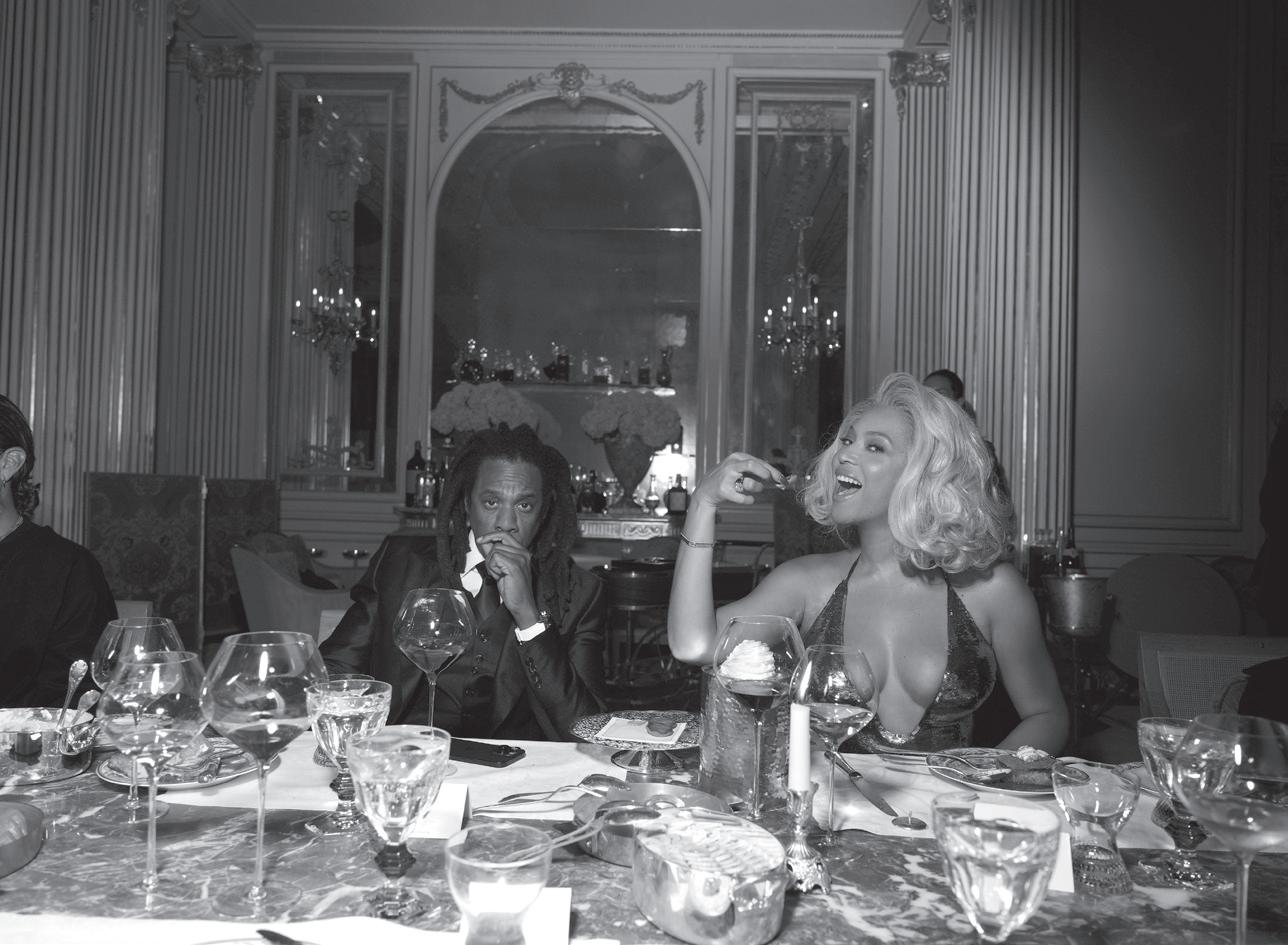


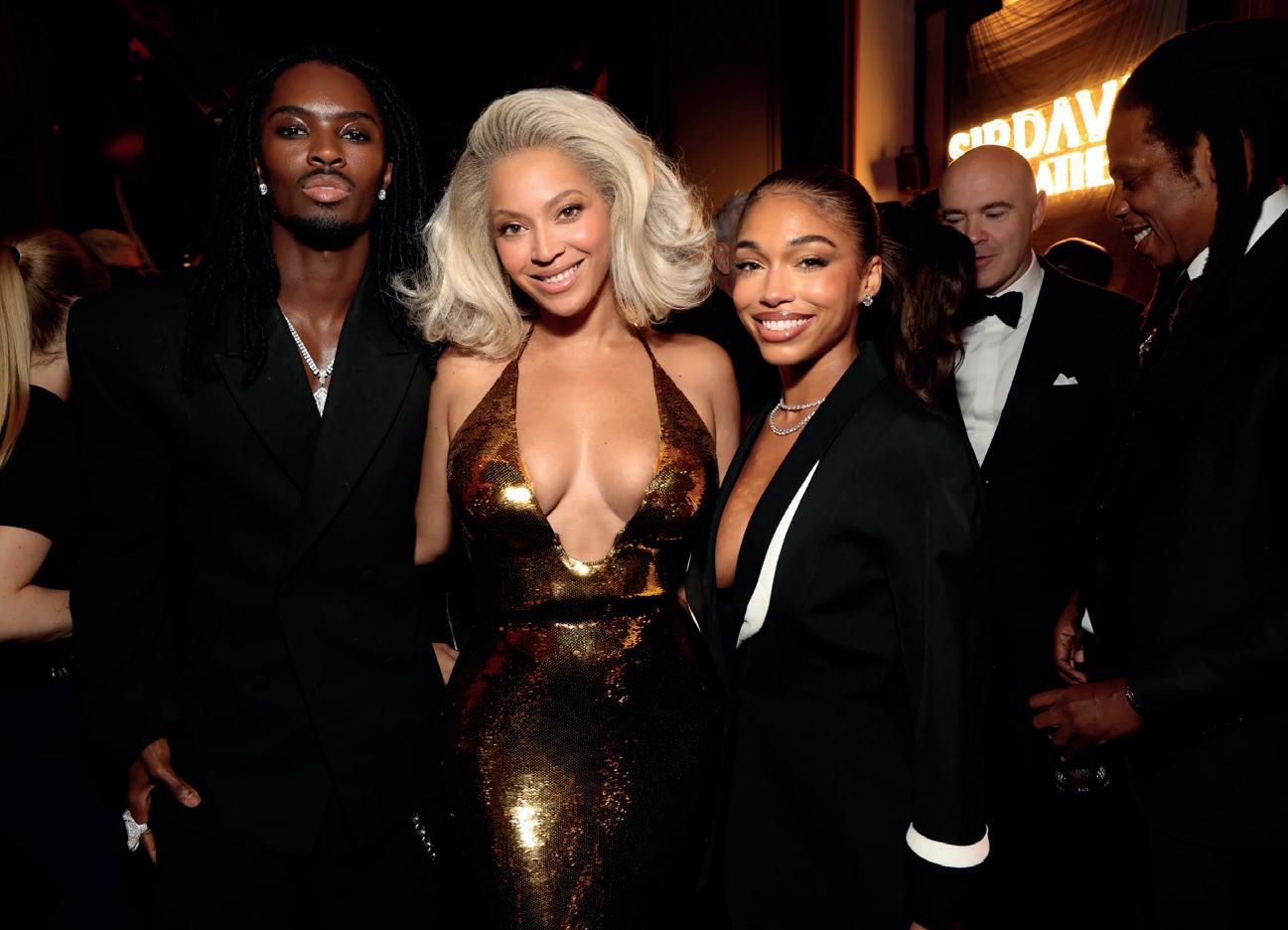

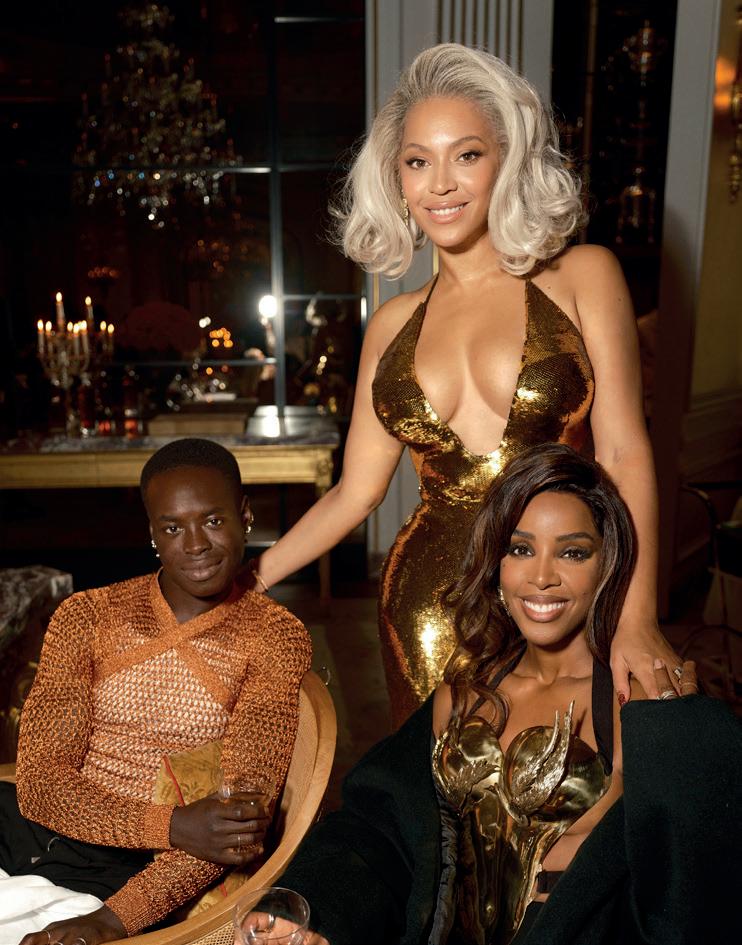
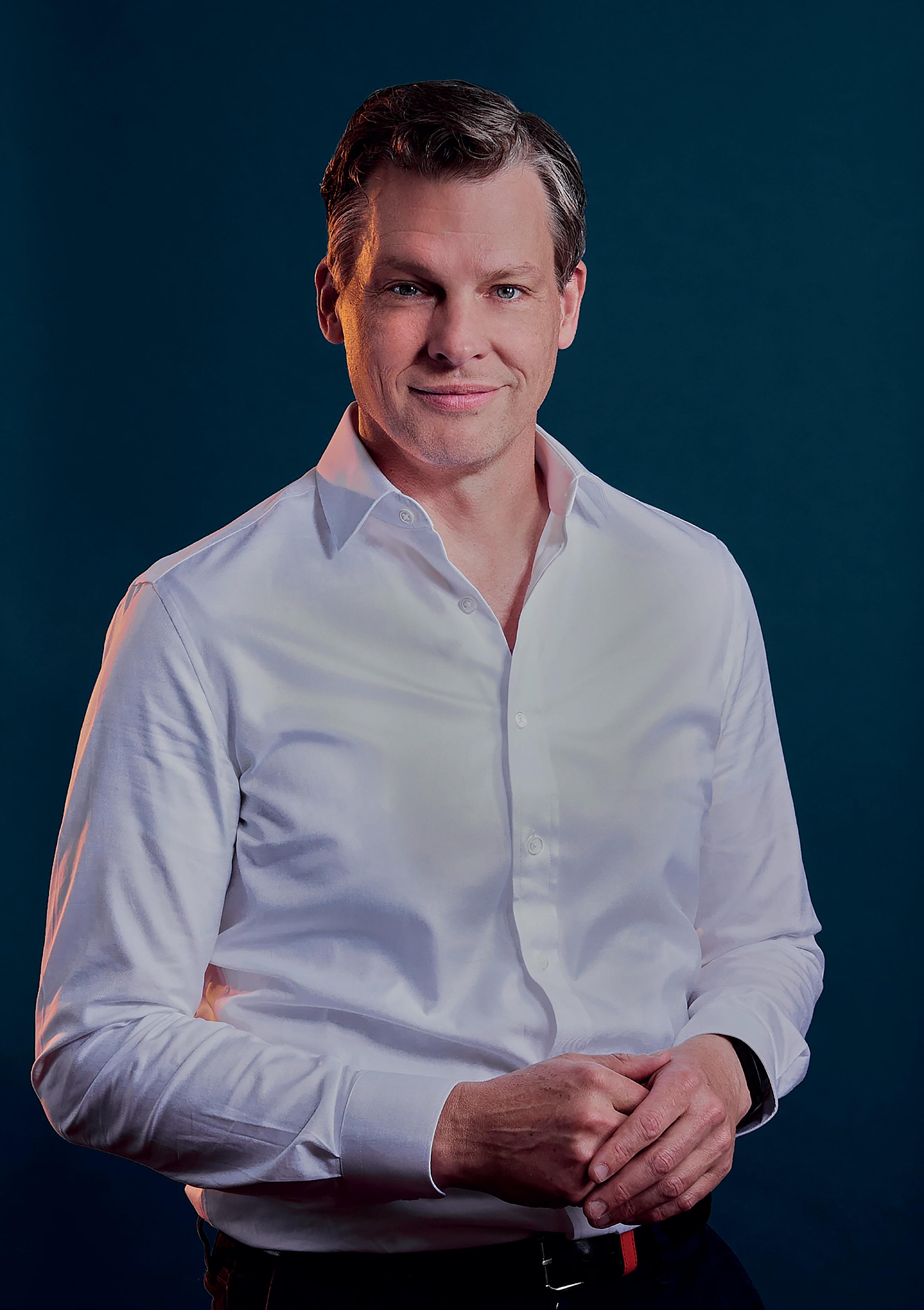
Greg Peters has navigated the rapidly changing landscape of the entertainment industry with remarkable foresight and leadership. As co-CEO of Netflix, he stands at the forefront of one of the world’s most influential companies. With a career spanning over 15 years at Netflix and a deep-rooted background in technology, Peters has played a pivotal role in shaping the streaming giant’s global expansion and strategic innovations
GGreg Peters, the co-CEO of Netflix, stands as a testament to strategic vision and leadership in the rapidly evolving entertainment industry. Appointed to the role in January 2023, Peters has been an integral part of Netflix’s journey since he joined the company in 2008. His career trajectory reflects both a deep understanding of technology and an astute approach to business development, which have contributed significantly to the streaming giant’s continued dominance.
Peters’s ascent within Netflix is marked by his remarkable versatility. Initially serving as the company’s Chief Streaming and Partnerships Officer, he was responsible for spearheading Netflix’s international expansion and forging key global partnerships. Over the years, his role evolved, and in 2017, he became the Chief Product Officer, a position in which he was responsible for the company’s innovation in product development. His leadership in this area saw the introduction of several important initiatives, such as smart downloads, mobile gaming, and the introduction of ads to the platform. His decision-making during this period was lauded by Reed Hastings, Netflix’s cofounder, who praised Peters for consistently making “great decisions” in shaping the company’s future.
In 2020, he added another title to his resume, becoming Netflix’s Chief Operating Officer. In this capacity, Peters took on broader responsibilities that included overseeing operational efficiency, a critical function as the company scaled globally and faced increasing competition in the streaming market. Under his leadership, Netflix introduced impactful measures such as tighter controls on password sharing—an initiative that reflected Peters’s readiness to adapt to shifting market demands.
Peters’s leadership journey culminated in his appointment as co-CEO, alongside Ted Sarandos, in 2023, following Reed Hastings’ transition to executive chairman. In this new role, Peters’s expertise in operations and product strategy continues to influence Netflix’s strategic direction. Together with Sarandos, he is at the helm of a company navigating a landscape that demands constant innovation and agility, particularly as competition intensifies from both traditional media and emerging digital platforms.
Greg Peters’s background, however, extends beyond his tenure at Netflix. Before joining the streaming giant, he built a solid foundation in the tech and entertainment sectors. Peters earned a Bachelor of Science degree in Physics and Astronomy from Yale University, a discipline that sharpened his analytical skills and ability to approach complex problems with a methodical mindset. His early career included positions at Macrovision Solutions Corp (later renamed Rovi Corporation), Mediabolic Inc., and Red Hat, Inc., where he gained extensive experience in the development of digital entertainment software and consumer electronics.
His decision to join Netflix in 2008 was a turning point in his career. At the time, Netflix was transitioning from a DVD rental service to an emerging digital streaming powerhouse. Peters’s role as the company’s International Development Officer saw him play a crucial role in Netflix’s international expansion, securing pivotal partnerships with consumer electronics companies and Internet service providers. These collaborations were essential in bringing Netflix’s streaming service to global audiences.
Peters’s contributions to Netflix are not limited to product development and operational leadership. Under his guidance, Netflix has solidified its reputation as a global leader in original content production, from the creation of Japanese originals to its continued push into interactive media. As co-CEO, Peters’s role is central to overseeing Netflix’s growth strategy in a competitive market where technology, content, and consumer demand are constantly in flux.
In his personal life, Peters hails from a family with deep roots in journalism and the arts. He is the grandson of William Peters, a journalist and civil rights activist, and the nephew of Gretchen Peters, a renowned singer and songwriter. His upbringing in such an intellectually rich environment has no doubt shaped his approach to business—one grounded in both creative thinking and a commitment to social impact.
As Netflix continues to innovate under his leadership, Greg Peters stands as one of the defining business figures of his generation. His journey reflects not only the rapid transformation of the entertainment industry but also the critical role that visionary leaders play in shaping the future of global enterprises. With his extensive experience, strategic acumen, and commitment to excellence, Peters is well-positioned to guide Netflix into its next chapter of growth and success.

Welcome to the new sound of music. Artificial intelligence is revolutionising how songs are created, discovered, and experienced. From bedroom producers crafting hits with AI tools to virtual artists selling out stadiums, technology isn't just changing the music industry—it's composing its future. As these groundbreaking tools become accessible to all, the line between amateur creators and professional success grows thinner by the day
AI is revolutionising the music industry, reshaping how songs are created, produced, and discovered. Artists are being presented with new and innovative tools that allow them to experiment with new sounds, streamline production, and reach wider audiences. With AI, musicians have unprecedented opportunities to refine their artistry, gain exposure, and carve out their place in the industry.
Software like Loudly and AIVA are changing the way artists compose music. Using inputs like genre, mood, and duration, musicians can generate entire tracks in minutes. This technology doesn’t replace creativity, it enhances it. By handling the technical tasks, AI frees artists to focus on crafting, refining, and experimenting with their soundscapes.
Making professional-quality production is now more accessible than ever. AI tools like LANDR are pushing the boundaries of music production, positioning itself as a unique all-in-one solution. Tasks like mixing and mastering, that were once reserved for high-end studios, can now be achieved anywhere inspiration strikes, at a fraction of the cost.
This production software isn’t reserved solely for independent artists, LANDR has made quite a name for itself, with industry giants like Warner Bros and Disney Music Group, leveraging this technology.
Have you ever noticed how Spotify always seems to know what you want to hear? AI-driven algorithms analyse listening habits and preferences to create tailored recommendations. This shift toward smart listening is revolutionising how we experience music, making it easier than ever for users to discover new tracks. It also has huge benefits for artists, bridging the gap to connect directly with their ideal audience.
Meet the AI Performers Taking Centre Stage
AI isn’t just assisting artists, it’s creating them. Virtual personas
like Hatsune Miku and Lil Miquela have accumulated massive followings, releasing music and performing in virtual concerts.
Hatsune Miku, a digital pop star with a synthesised voice, has performed at sold-out concerts around the world, captivating audiences with her holographic presence and dynamic performances. Similarly, Lil Miquela, a virtual influencer and musician, has amassed millions of followers on social media, collaborating with brands and has released numerous songs.
These AI-driven artists are pushing the boundaries of what it means to be a performer, offering entirely new ways for brands, musicians, and audiences to connect.
With the increase of AI-informed content, copyright has become more complex and challenging to enforce, raising questions about ownership, attribution. However, AI tools like Dubset (VerseOne Distribution) are helping artists track how their work is used, ensuring they receive royalties.
By streamlining copyright management, AI is ensuring fair compensation and better protection of intellectual property.
AI is empowering undiscovered and inexperienced artists by providing tools that streamline the creative process, allowing them to compose, produce, and refine their work with ease.
From generating sophisticated soundscapes to mastering tracks on a budget, AI opens doors that were once closed to those without access to high-end equipment or industry connections.
As this technology continues to evolve, the possibilities for artists to innovate, curate, and connect with audiences are expanding. With AI handling time-consuming technical tasks, artists can focus on pushing the creative boundaries.
The integration of AI in music is giving every artist, regardless of experience or resources, the opportunity to make their voice heard within the industry.


Eva Longoria’s journey from television icon to formidable investor redefines the intersection of entertainment and business. Through bold, strategic investments—from rescuing the John Wick franchise to supporting women-led brands and elevating Hispanic-owned businesses—Longoria exemplifies how purpose-driven decisions can yield powerful results
EEva Longoria has steadily transformed herself from a celebrated actress into an influential powerhouse in entertainment investment. Her strategic decision-making, portfolio diversification, and commitment to authentic representation in her projects showcase her evolution from screen star to business mogul, with a distinctive focus on purposeful investments that reflect her values and ambitions.
Longoria’s journey as an investor began in 2014 with an unexpected and daring financial decision: a critical cash injection into the production of John Wick. The soon-to-be action classic faced shutdown when its directors, Chad Stahelski and David Leitch, lost nearly $6 million in gap financing just days before filming. Unfamiliar with the nuances of film financing, Longoria nevertheless provided the capital to keep the production afloat. This bold move allowed Stahelski and Leitch to complete the film, which ultimately grossed over $86 million and reignited Keanu Reeves’s career. For Longoria, it was an unplanned yet pivotal entry into Hollywood’s investment arena.
Since her John Wick investment, Longoria has carved a unique path by investing in ventures that align with her values and vision. She founded Hyphenate Media Group, a production company that has delivered projects like the Apple TV+ series Land of Women, in which she also stars. Her portfolio spans several industries, reflecting her thoughtful approach to impact-driven investment. Notable ventures include Casa Del Sol, a tequila brand emphasizing female leadership in a male-dominated industry; Angel City FC, a pioneering women’s soccer club co-owned with Natalie Portman; and Siete Foods, a Hispanic food brand that reached a valuation of over $1 billion after its recent sale to PepsiCo.
Longoria’s investment philosophy centres on aligning with people who share her passion, expertise, and relentless dedication. In the case of Casa Del Sol, she was drawn to the brand’s story and its representation of women in an industry where female distillers are rare. Her stake in Angel City FC, meanwhile, was born out of a vision to reshape the economics of women’s sports and support female athletes. The recent 14-fold return on her investment in Angel City FC underscores the potential of innovative business models to transform traditional markets.
Expanding her presence in sports, Longoria also invested in Club Necaxa, one of Mexico’s oldest soccer teams, aiming to elevate Mexican soccer’s profile in the U.S. Her production of a docuseries on the club highlights her broader commitment to culturally resonant storytelling and sports empowerment. Her relationship with Club Necaxa also links her to the rising trend of cross-industry collaborations; fellow celebrities Ryan Reynolds and Rob McElhenney, owners of Wrexham AFC, have invested in Necaxa, and Longoria recently filmed a segment for Welcome to Wrexham.
The success of Siete Foods is another example of Longoria’s commitment to supporting Hispanic-owned businesses that align with her heritage and values. A Texas-based family business, Siete Foods captured her interest from its infancy, and her belief in the brand’s mission contributed to its success and eventual acquisition by PepsiCo for $1.2 billion.
Longoria has expressed that her success stems not only from financial investment but from hands-on dedication. She actively participates in promotional events for Casa Del Sol, working to boost the brand’s awareness through social media and personal appearances. This hands-on approach extends to Siete Foods, where she has been involved in branding and marketing efforts to ensure the products resonate with a diverse and health-conscious audience.
Her production company, Hyphenate Media, is another key element in her business portfolio, allowing her to produce and direct content that elevates Latino and female voices in Hollywood. Through Hyphenate, Longoria aims to cultivate the next generation of Latinx actors, writers, and producers, ensuring that her influence continues through the talents she mentors and develops.
Reflecting on her journey, Longoria recognises that her early investment in John Wick was both fortuitous and transformative. Her curiosity about how to maximise financial returns has evolved into an astute understanding of market dynamics, positioning her as an influential figure in the entertainment industry’s evolving landscape. As she continues to expand her portfolio, Longoria is committed to blending cultural resonance with profitable, socially conscious investments.
Longoria’s focus on empowering the Latino community and women in every field she touches marks her as a distinctive presence in Hollywood and beyond. Her success exemplifies a visionary approach to the business of entertainment, where purpose and profitability intersect to create lasting impact.

TThe entertainment industry, ever an arena for innovation, is now witnessing a radical transformation through artificial intelligence. From talent discovery to predictive analytics, AI is reshaping every facet of entertainment and media. For executives in film, music, and digital media, this evolution offers a glimpse into the new paradigms of efficiency, consumer insight, and opportunity that AI brings to the industry.
AI-Driven Talent Discovery
In an industry where trends shift rapidly and audiences increasingly drive demand, traditional talent discovery often falls short. AI is now taking the lead in identifying promising new talent by analysing vast amounts of data from digital platforms. A notable example is Alfie Castley, a London-based musician whose career saw exponential growth thanks to AI. Castley was discovered by a Swedish record label that uses AI algorithms to spot emerging talent.

Through the label’s data-driven approach, it was revealed that Castley’s fanbase was not in his home country but rather in Southeast Asia, where his single “Teenage Mona Lisa” reached over 16 million streams in the Philippines alone and seven million in Indonesia. This insight, derived from AI’s ability to detect patterns and preferences, illustrates how technology is democratising the talent selection process, empowering labels to respond directly to audience interest on a global scale.
Redefining Success in Film with Predictive Analytics
In addition to talent discovery, AI is reshaping decisionmaking processes in film production. Companies like Cytic, headquartered in Los Angeles, use AI-driven analytics to predict box office performance with impressive accuracy. With an 85% success rate, Cytic’s model draws on a range of data points, including cast and crew choices, budget, genre, and even script details. The firm’s tools allow studios to evaluate financial risk, strategically allocate resources, and make more informed decisions on project green-lighting.
AI is rewriting the rules of the entertainment industry, offering unprecedented ways to discover talent, forecast box office success, and even generate art. For business executives, this technology isn’t just a trend—it’s a strategic revolution. By uncovering hidden audience insights, enhancing creativity, and redefining operational efficiencies, AI is empowering leaders to meet shifting demands with precision and vision

As an illustration, Cytic’s predictive tool examined the 2023 release of Barbie, projecting a potential revenue in the range of $700 million across various formats. While the film exceeded even these optimistic expectations, becoming a cultural phenomenon with over $1 billion in ticket sales within 17 days, the AI model highlighted how studios can leverage predictive tools for strategic insight. Despite its success, Cytic acknowledges that AI is not a “crystal ball” and that some high-impact cultural moments remain difficult to forecast.
AI’s influence in entertainment extends to generative AI, where creativity is supported, not replaced, by machine learning. Using large datasets, deep neural networks now enable musicians, visual artists, and performers to experiment with new forms. Beatboxer Harry Ye, for example, collaborated with AI to create a “second self,” a digital voice that complements his original music with synthetic sounds. This AI voice mirrors his vocal style, expanding his artistic range and allowing him to explore new avenues of creativity. AI-powered generative tools have also facilitated innovations in dance, as seen with the Leipzig Ballet, where dancers integrated AI-suggested movements into their routines, introducing new choreographic elements.
Generative AI’s growing capabilities are providing artists with fresh possibilities, whether through cross-discipline collaborations or accessibility to tools previously out of reach. For many in the creative sector, this development holds the promise of inclusion and opportunity, allowing under-represented voices to experiment with art forms on an unprecedented scale.
While AI’s potential is vast, it brings with it significant challenges and ethical dilemmas. One of the most pressing concerns is the potential displacement of jobs across the entertainment industry. As AI becomes more adept at replicating human voices, creating digital avatars, and even generating video content, roles traditionally held by voice artists, actors, and special effects technicians face uncertainty.
Voiceover artist Marcus Hutton voices a concern shared by many in the industry: AI’s ability to synthesise voice recordings threatens to overshadow decades of skill and artistry. Hutton’s own voice was recently cloned using a minimal amount of training data, highlighting the ease with which AI can replicate
human voices. While the technology was not flawless, the results were close enough to signal a potential disruption for voice professionals who may find themselves competing with digital versions of their own voices. As Hutton aptly states, this is not about simplifying workflows but about job sustainability and ethical implications for the creative community.
The rise of AI in entertainment also calls for a reassessment of intellectual property rights and consent frameworks. Copyright debates are intensifying, with several high-profile lawsuits questioning the boundaries of AI’s use of creative works. British actor Marcus Hutton and others are advocating for “active consent” policies, where artists’ consent is required for each AI-derived application of their voice or likeness. For many, it is imperative to retain control over how their creative assets are used, and legal battles are likely to set important precedents in the coming years.
For business executives in entertainment, AI represents both an asset and a challenge. On one hand, AI is enhancing decisionmaking, reducing financial risk, and expanding creative potential across borders. On the other hand, it raises fundamental questions about the future of work and the rights of artists and creators. As the industry moves forward, balancing technological innovation with ethical stewardship will be essential for building a sustainable, fair, and inclusive future in entertainment.
For business leaders in the entertainment industry, harnessing AI’s capabilities presents a strategic pathway to long-term success. By integrating AI-driven insights into market trends, content prediction, and consumer behaviour, executives can make datainformed decisions that better align with audience preferences and maximise financial returns. Leaders should view AI not only as a tool for operational efficiency but also as an enabler of innovative storytelling and personalised audience engagement. By investing in AI technology and ethical frameworks for its application, executives can unlock new revenue streams, enhance creative output, and ensure a more resilient and adaptable business model. Embracing AI responsibly positions leaders to stay at the forefront of the entertainment revolution, capitalising on its benefits while navigating its challenges with foresight and integrity.

In an exclusive interview for The Executive Magazine, Kate Mason sits down with England rugby star Shaunagh Brown. Discover her extraordinary path from gas engineer to international athlete and back to British Gas - this time as a corporate change-maker. With characteristic wit, she reveals why elite athletes make natural disruptors in business, and how authenticity might be the most valuable skill of all.
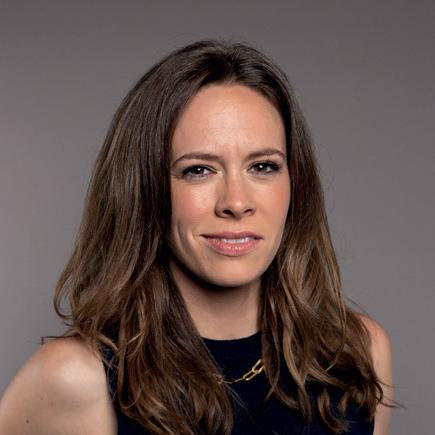
Joining me is former England rugby star Shaunagh Brown, who brings a refreshing blast of honesty to the corporate world. Having represented her country in both rugby and athletics, worked as a firefighter, and started her career as a gas engineer, Brown is now back where it all began – but this time as a brand partnerships executive at British Gas. Her journey from elite sport to the boardroom offers fascinating insights into the value athletes can bring to business, and why sometimes the best approach is simply saying what you think. With her trademark candour and humour, she discusses the challenges of transition, authentic leadership, and why the corporate world could do with “a few more chill pills.”
You started playing rugby about 10 years ago, then made your international debut in 2017. Before that, you’d already represented England in the Commonwealth Games. Now you’re in business – would you call yourself a serious businesswoman? And did you expect to have this many different careers?
“I’m not a serious businesswoman. I try to avoid serious business situations. If things are getting awkward, I just tell a joke or say something completely sarcastic or inappropriate. Growing up, I never thought ‘I’ll be a trailblazer for women’s sport, and eventually just be a trailblazer for women.’ That’s not what I signed up for. I couldn’t have made this up because I didn’t know it existed.
“Even now I’m living it, I’m still not quite sure what I do. I have a job at British Gas and I have a job title – I’m British Gas brand partnerships executive. When everyone asks what that is, I just say ‘well, it’s just that.’ My other stuff, I just call it other stuff. It’s really important stuff, and really fun stuff, but I’m still not quite sure what to call it. I didn’t dream of this lifestyle, but now I’m in it, I wouldn’t change it for the world – would recommend to a friend.”
Is it right that British Gas was your first job?
“Yes, my first proper job was a British Gas apprenticeship in 2010. I did an installation apprenticeship, fitting boilers, radiators, just general central heating. I did that for five years and then moved on. Now I’ve gone back home, gone back to where it all started.”
You’re doing what’s called the Centrica Leadership Placement right now, which sounds pretty grand. I’m interested to learn more because you’ve got all this experience of being an elite athlete and you must have met so many different people in so many different places. The opportunities that you’ve come across and created for yourself are just so wide. It’s pretty incredible that you’ve got all that and you’re now bringing this into this workplace. How did it all come about?
“I saw it on one of the 110,000 WhatsApp groups I’m on. Someone put a post in about it – the athlete who shared it is on the board, the athlete representative on the British Olympic Association board. The pathway program started with ex-forces last year. Because of British Gas’s partnership with Paralympics GB and Team GB, they extended it to athletes because, as we know, current and ex-athletes have an elite set of skills.
“This year, 19 of us started on the same day, a mixture of ex-
forces and athletes. Within the athletes, it’s not just Olympic and Paralympic sports – it was about representing your country on an international stage. I looked at the flyer that came on my WhatsApp and thought, why not? That’s kind of how I approach most of life. I knew I was going to retire this season, wasn’t really sure what I wanted to do, if I wanted to have a proper job or not. So it seemed like a good idea.”
Did you have much experience with CV writing and covering letters? Because I even think in my job working as a broadcaster, I can’t remember the last time I did a serious job interview.
“I genuinely like to be prepared for any situation. I did have an adult corporate CV – I have a few different CVs for different occasions. I got help with that about a year ago through a mentor program with Women’s Sports Trust, their Unlocked program. I got partnered with a mentor who helped me write my CV. I just updated it and submitted it. The covering letter was straightforward because I had a template. But I did hear stories of other successful candidates who got help from the people who run the Centrica program – they literally just asked for help with writing their CV and got it.
“What I really like about that is the holistic approach, acknowledging that you’re asking forces personnel and athletes to apply who might not have that kind of skill set. You might have been in the forces for the last 20 years, you might have been an athlete for the last 10 years, so why would you have the most upto-date corporate CV?”


You’ve worked in so many different kinds of working worlds, including firefighting. So I guess going into this kind of workplace hasn’t been that much of a stretch for you. At 34, how do you feel about where you’re coming in? Because lots of people you’re working with might have been in this kind of business environment nonstop since university or even before that.
“Sometimes when I speak to people who are heads of department or directors, in charge of something really big, we talk about age and some of them are younger than me. That’s when I think, ‘my gosh, what have I been doing all my life?’ My computer literacy gets me by – I’m not the best, not awful. These people are running really big parts of the business. But then you put it in perspective and I tell them my backstory, and they’re like, ‘well, what have they been doing with their lives?’ It’s swings and roundabouts and accepting that we choose our paths. As long as you back yourself and go with it, expect to be good at it because that’s what you’ve chosen.”
It’s interesting because when you’re moving into a corporate world like that, you might not know how to put certain skills on a traditional CV. You know how to network, you know how to find the people you need to make things happen, but you might not know the specific corporate terms for these skills. That can sometimes be intimidating.
“Reading the job description for the brand partnerships executive role, there were a few headlines that stuck out. One was about
being a ‘positive disruptor’ – I wouldn’t call it that, I’d call it saying my opinion out loud, but apparently there’s a title for that. Another one was ‘the ability to talk to the most junior member of staff, as well as the CEO.’ I thought, ‘what, am I not going to be able to use my words with someone who’s different?’ They’re saying these skills as if they’re special, but because I’ve got them, I just assume everyone has them. But apparently not.”
So it sounds like you focused your attention on this application and mapped it onto what they were looking for.
“Yes, and reading the job description, there was a lot I didn’t even know what it meant, let alone if I had the skill to do it. But then I’d show it to someone in the corporate world and they’d say ‘that just means you can be on time’ or ‘that just means you can get work done.’ I thought, why not just say that? Use simple words and you’ll get more simple people. I don’t know, maybe people don’t want simple people, but I quite like them because I put myself in that category. Ask me to do a job, I get it done.”
We’re talking about how different industries and workspaces have different languages, and one of the things that’s hard about moving between industries is figuring out these different spaces. Marketing has acronyms for everything, but similarly, being a pundit on TV for rugby requires its own language that other rugby players and fans understand. You seem to have this flexibility to move between these different spaces. In terms of sport and thinking about your career up to now, did you think you could make a living from sport when you were starting out?
“Well, starting in sport, I was 12 years old and it just wasn’t a thing then. I just loved being outside. Even getting to 16, 17, 18, when I was still in athletics, I did think, ‘I feel like I’m ready to go full time.’ But there was no financial support. My upbringing and family life meant that was never an option – I couldn’t just not work. When I started playing rugby and got asked into an England camp, we got paid for being in camp.
“You got a day rate and then if you got selected for the game, you’d get a match bonus. I remember thinking, ‘they’re going to pay me to train?’ But everyone else from that rugby world was already saying ‘yeah, I know it’s not ideal, ideally we’d have full-time contracts.’ But I was just amazed they were giving me money to train. Obviously it developed from that into the full-time contracts in 2019. Playing rugby full-time was never on my to-do list, and I have a very big to-do list. It just happened.”
So you just had a sense that you wanted to do as much sport as possible and then gradually piece by piece that became possible?
“Yes, it was just about having fun, doing what I wanted to do –which was sport, being outside, traveling around the country, having somewhere to be on a Saturday or Sunday. I’ve always lived an active lifestyle, wanting to be buzzing between different places, going up to Sheffield to compete, going back down to Margate. I was born at a good time in life that I was able to play rugby full-time.
“That’s literally just luck of when I was born. You get players like Rachel Burford and Rocky Clark who did get some payment towards the end of their international careers, but they were born in the wrong era to play rugby full-time and be paid for it. I don’t like to use the word lucky, but when it’s about the year you’re born, that is luck. We’re not better players, we’re not better people. England rugby just decided then that they were going to really invest in women because that’s the future of the game.”
On that lucky/unlucky topic – the reason you weren’t necessarily going to be in a position to earn money and play rugby full-time is, of course, because you’re female. If you’d been male, that would have been a clear path. How do you feel about that?


“There are huge differences between being male and female. The boys get picked up at school, go into an academy, then get full-time contracts and support. Boys come out of school and go straight into rugby. I say it’s great, but where do they learn their life skills? It’s very different for the women’s game. You join either late, like I started at 25, or a lot of women start playing at university because it’s their first exposure to it.
“Most people playing in the Premiership women’s rugby have a job. As much as we now have full-time contracts for England players, most of the Premiership players have jobs. Actually, I wouldn’t want the same model as the men’s game because those boys get to the end of their careers and it’s just like, ‘what now?’ Some have never had to make a CV, write a cover letter, cook for themselves or wash their own clothes.
“You’re not preparing them for independent life. I’m not sure I’d want the women’s game to get to that place where women are worried about what happens next. At the moment, it’s just in two different places and it’s about using the strengths and weaknesses of each to come up with a perfect formula in the middle.”
The job that professional athletes do, whilst it’s great while you’re doing it, isn’t going to last that long relatively speaking. And yes, it will be your whole identity for a time, but ultimately it is just a job…
“It’s a job while you’re doing it, but you never switch off. It doesn’t get to a certain time and you’re not a rugby player anymore –you’re always that. For me, especially when you have a certain profile, I just call it ‘always on.’ I always feel like I’m on show and have to be a certain person. Some corporate jobs are like that too, where you constantly have to be that representative for that company.
“When you get to a certain profile, you are a role model and you have to watch what you put on social media. For me, it’s not only what’s in focus in the picture, but I’m checking what’s in my background, what sounds you can hear, what other people are saying. I know a lot of my following is of a certain younger age, so I’m not going to be putting me going out drinking alcohol on my socials. Whilst yes, it’s what I do sometimes, that’s not the public image I want to portray.”

How do you balance that recognition of yourself as a role model and thinking about what you want to show people while being authentic?
“What a great question. Some of it helps that ultimately, if I don’t want to put something, say something, or go somewhere to an event, I won’t. On that side of my life, I am my own boss. What you see on my social media is me. When I speak and answer questions or host a panel, that’s me. Some people struggle with it – they’ll say ‘I’ll get the brief to you, I’ll get the questions to you so you can prepare.’ I say no stress if not, because I’ll answer from the heart. I don’t have anything to sell, I don’t need to get keywords or buzzwords in. Sometimes I forget to do self-promotion because I’m speaking from the heart.
“I learned, not that long ago considering I’m 34, it’s so much easier to be myself than to pretend to be someone else. Because if you lie about who you are, you have to remember what persona to be in each situation. Whereas me, this is it. I get it, I’m not for some people. But I know a lot of people love who I am and what I’ve become. They’re on board the Team SB train and it’s always on the move. A few stations, a few stops, but no end destination. Jump on for the ride if you want – it’s a fantastically fun journey.”
Do you feel any nerves about presenting yourself in that way in this new corporate environment?
“I guess there is some hesitancy, but mainly because I’m now dealing with people who don’t know me. Communicating with someone entirely over email, I speak a lot in sarcasm and jokes, I do a lot of playful things. But I understand typing some of the things I say out – I have to think how does that look to someone who doesn’t know anything about me or how I communicate face to face.
“Then there’s the part about people who are not into sport – it’s a whole different breed of human beings. I’m like, ‘you all need to just chill out.’ You’re too serious. I know it’s your whole job to care about it, but you can care while having fun. I think the corporate world could deal with a lot more chilling out. I found it in the fire service as well – everyone’s just pulling your leg the whole time. And the sooner you get on board, the more fun you will have. We need more practical jokes, more chill pills, and we’ll get a lot more work done.”
What do you think are the main things that organizations like the one you’re working for can benefit from if they had more elite athletes and people who’ve worked and played in the kind of environment that you have?
“You’ll get a whole different skill set that you probably couldn’t write down on a CV. For my job, I’m literally in sports marketing, it just happens to be for British Gas. There are experiences I can talk about where I know the piece of paper says this is really going to work, but when I’ve been sat in that changing room or that meeting room, it doesn’t work. I’ve not just sat in one changing room or one meeting – I’ve been with a lot of different types of people.
“Someone who’s been an international athlete or an elite athlete is likely to always want the best. No matter what, it’s about what’s next. I call it an elite athlete disease – you could give an Olympic gold medalist an Olympic gold medal and they’ll still come back to another Olympics. In the business world, surely that’s what it’s all about? You just want to be better. While you do whatever it takes to be better, you still understand the power of relationships. You still understand that you have a team behind you. Even if you do an individual sport, you are not an individual.
“Elite athletes know that we need all types of skillset – someone who’s going to clean the gym is just as important if you are a gymnast as someone who’s going to coach you. Someone who’s going to fix you when you’re broken, someone who’s going to get your mental health in the best place possible. The whole team is needed to be the best and athletes just completely get that.”
Best of luck with it – I look forward to hearing more about it in a few months’ time to see how it’s going!
“It’s actually a nine-month contract, so it’s a nice middle ground to get a taste to see if it’s what I want. We’ve been told there’s a place in the business for us if we want it. Honestly, I love it. I think it’s a fantastic thing – more companies should do it. Got to tell them that.”

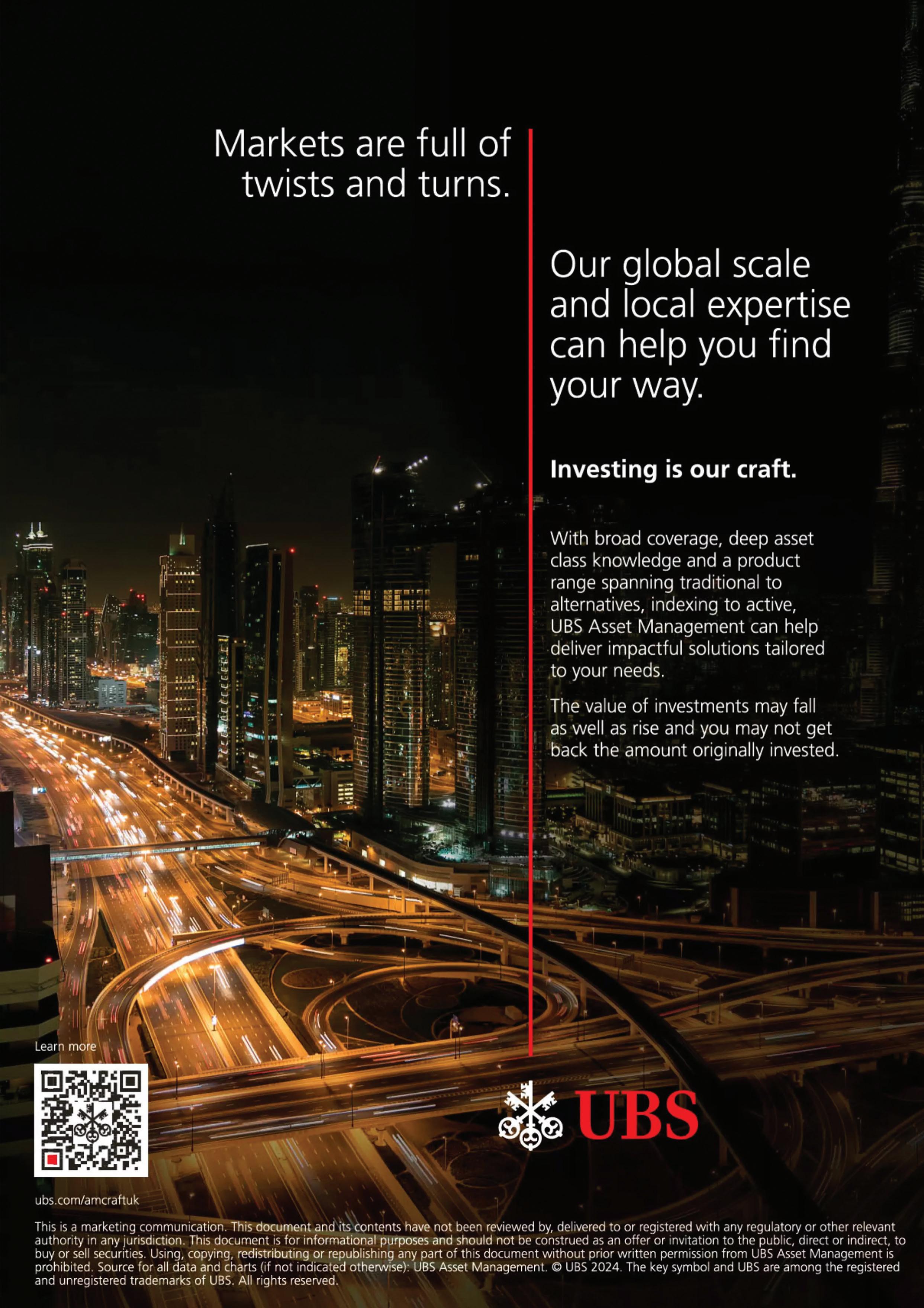
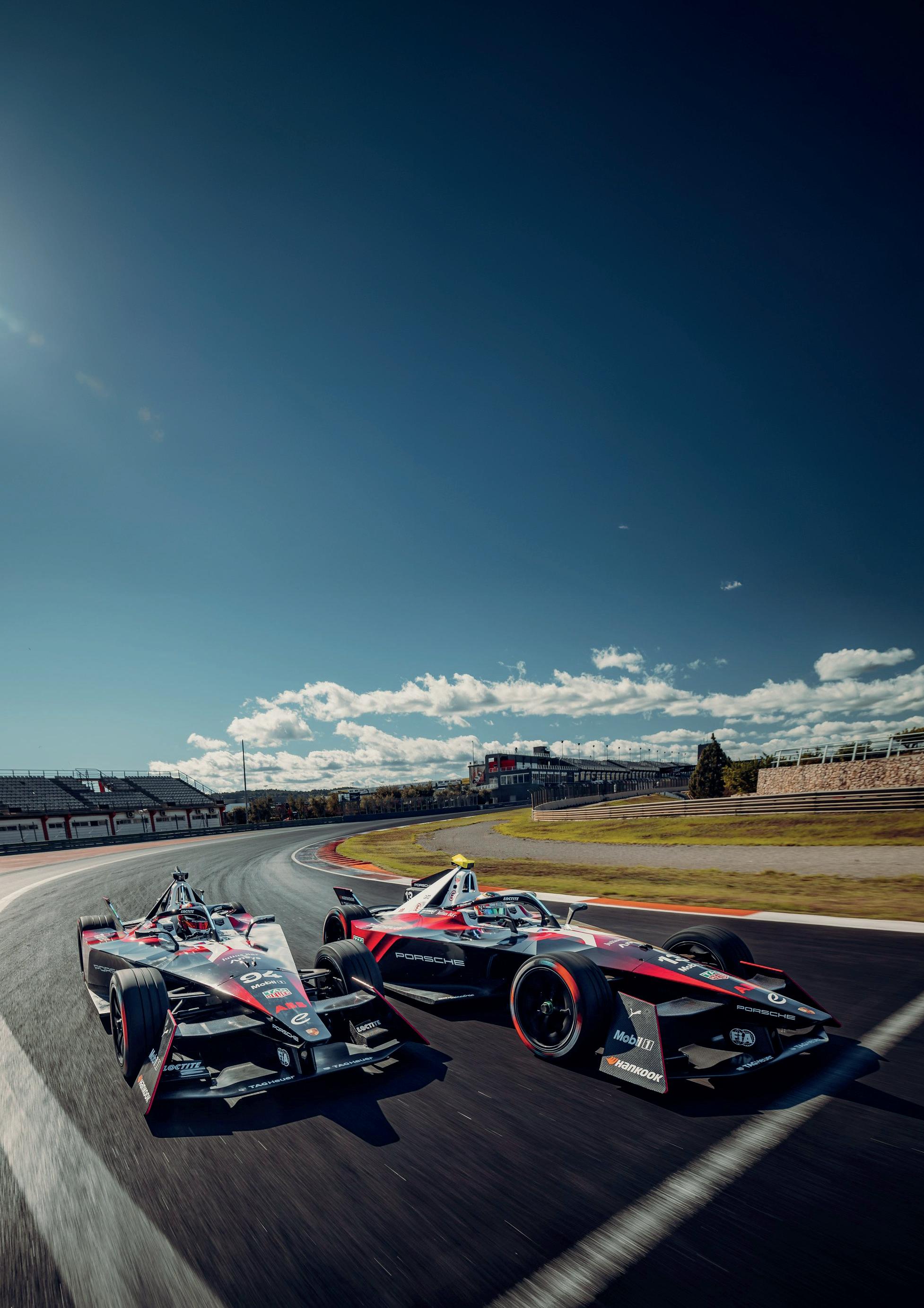
A groundbreaking initiative is poised to transform motorsport as Formula E hosts its first all-women pre-season test session at the Ricardo Tormo circuit in Valencia. This historic event highlights female talent and features the cuttingedge GEN3 Evo race car, underscoring Formula E's commitment to inclusivity and opportunity in racing

IIn an unprecedented move for the FIA Championship landscape, Formula E hosted a dedicated test session exclusively for women racing drivers on at the Ricardo Tormo circuit in Valencia. This pioneering initiative forms part of the pre-season testing schedule for the ABB FIA Formula E World Championship and represents a significant stride towards inclusivity in motorsport.
This historic event showcased 22 elite female drivers, all of whom pilot the state-of-the-art GEN3 Evo race car, capable of reaching 0-60 mph in a mere 1.82 seconds, making it 30% faster than a current Formula 1 vehicle. This alignment with cutting-edge technology provides an unparalleled platform for women in motorsport, ensuring they have access to the same high-performance machinery as their male counterparts in the series.
Each of the 11 teams participating in the championship is mandated to include at least one female driver for the half-day test, with the option to field a second. This collective on-track experience aims not only to provide visibility but also to cultivate an environment conducive to professional growth for these elite athletes. By facilitating such opportunities, Formula E is effectively creating a pathway for women to enhance their skills and establish themselves in the highly competitive motorsport arena.
The Valencia test was complemented by a series of media engagements, including press conferences and interviews, designed to elevate the profiles of these women within the elite motorsport community and beyond. This initiative not only targets established professionals but also seeks to inspire young women at grassroots levels, encouraging them to aspire towards careers in motorsport.
Despite motorsport being one of the few domains where men and women can compete directly, the current landscape remains disproportionately male, with only 3% of top-tier racing licenses worldwide held by women, according to the FIA. In response, Formula E is actively addressing these disparities, not merely by facilitating a one-off opportunity but by strategically dismantling the structural barriers that have historically impeded women’s progress in the sport.
Formula E’s commitment extends beyond the test session. The organisation is enhancing its long-term strategy to promote
gender equality through several initiatives, including:
The extension of the FIA Girls on Track programme, which will engage up to 400 local young women at the Valencia event, offering them a chance to interact with the participating drivers and take part in career-focused workshops.
• Collaborations with teams and partners to provide women drivers with additional support, encompassing engineering assistance, simulator access, future test opportunities, and comprehensive coaching.
• Consultations with accomplished women in sports to gain insights into their challenges, ultimately accelerating diversity and inclusion in motorsport.
• The integration of advanced technology into vehicles, such as power steering in the forthcoming GEN4 model (debuting in Season 13 in 2026), to enhance performance for all drivers.
• Ongoing amplification of the FIA Girls on Track programme throughout Season 11, aimed at further encouraging young women’s involvement in motorsport.
Partnerships with diverse, women-led organisations to pinpoint and address barriers to entry for women and girls in motorsport.
Jeff Dodds, CEO of Formula E, articulates the vision behind this transformative initiative: “We understand that achieving greater diversity in motorsport is not a straightforward task. However, to provide women with genuine equality, opportunity, and visibility in our series, it is imperative that we create the same conditions for all drivers, allowing them to develop and measure themselves against those already competing.”
He further emphasises the significance of using the cutting-edge GEN3 Evo car for this initiative: “Unlike other series where women drivers are often limited to older, less competitive machinery, they will experience the latest technology in the GEN3 Evo, which accelerates 30% faster than an F1 car, just as our Championship drivers do.”
Acknowledging that a single test will not rectify the long-standing challenges faced by women in motorsport, Dodds maintains that this initiative marks a vital step in an ongoing journey towards equality. He reflects on the demographic representation within Formula E, stating, “With an almost equal split of male and female fans, as well as within our executive and director teams, it is only right that our drivers and the broader ecosystem reflect those who support the sport.”
Money talks in professional sports, but for decades, it has spoken different languages for men and women. Writing for The Executive Magazine, Florence Rolland discusses when female athletes shatter viewership records and sell out stadiums worldwide, the business case becomes crystal clear: equal pay isn't just about fairness - it's about tapping into a market projected to reach £33bn by 2030. The numbers don't lie: investing in women's sports is no longer optional, it's essential

Exclusive contribution for The Executive Magazine from Florence Rolland, International Negotiation Consultant and Managing Director of Negotiate Ltd.

TThe debate around equal pay has been long-standing and controversial in professional sports, becoming even more vocal in recent years, but the business case for closing the gender pay gap in this arena, is increasingly clear. It’s not just about optics or fairness; untapped potential and sector growth also needs to be factored in. Investing in female sports and championing equal pay isn’t just a moral imperative – it’s a wise business decision that has been overlooked for too long.
The Danish Football team made headlines earlier this year for refusing a salary increase in order to ensure equal pay between the men and women’s teams, while more recently, the U.S. Soccer Federation’s reached a settlement with former U.S. Women’s National Soccer Team (USWNT) head coach Jill Ellis, who had threatened litigation over being paid less than her men’s national team counterparts. This followed on from the USWNT team’s fight for equal pay, which led to a landmark agreement in 2022. This agreement not only elevated the profile of women’s soccer but also inspired a broader movement in support of gender pay equality in sports. It also highlighted the power of negotiation and standing up for your own worth.
Expanding the Market by Tapping into Women’s Sports
Talent retention is a core challenge across industries, and sports are no different. Male athletes benefit from higher pay, but female athletes often struggle to make a sustainable living from their sports careers alone, resulting in many leaving the sport early or taking on multiple jobs to make ends meet. Women are equipped with the necessary interpersonal skills to make great negotiators but tend to neglect negotiating for themselves due to a lack of confidence in their own abilities and self-worth. Fear of negative backlash can also make women more apprehensive to make a stand. Negotiation training can be a critical tool in combating this.
Market potential is one of the strongest business arguments for investing in women’s sports and closing the pay gap. Increasing investment in women’s sports can lead to higher returns. The female sports audience has grown substantially in recent years, with the 2023 Women’s World Cup attracting over 1.12 billion viewers worldwide. This isn’t an isolated phenomenon; we’ve seen the same trend in women’s basketball, tennis, and other professional leagues. For instance, the Women’s National Basketball Association (WNBA) has smashed records on and off the court, with attendance up 48% from 2023, sellouts increased by 242% and more people tuning into the average televised game, 657,000, than ever before.
The demand for women’s sport is continuing to grow, with the potential to drive substantial revenue, and brands are taking notice, with the likes of Visa, Adidas, and Nike sponsoring highprofile women athletes and teams.
These companies see women’s sports as an underutilised platform for reaching diverse audiences and achieving market differentiation. They understand that female athletes embody qualities that resonate strongly with modern consumers—resilience, equality, and empowerment. By associating with these athletes, brands
can connect more effectively with a new generation of consumers who value inclusivity and gender equality. Mastercard’s partnership with the UEFA Women’s Champions League is an example of how brands are leveraging women’s sports to improve their brand equity and reach new audiences.
Investing in equal pay for female athletes creates a multiplier effect that extends beyond the sports industry. It spurs economic growth by increasing female athletes’ financial security, enabling them to reinvest in their communities, fund new businesses, and inspire future generations. When we pay female athletes fairly, we’re enabling more female entrepreneurs, coaches, mentors, and community leaders.
Modern consumers, particularly Millennials and Generation Z, increasingly demand that the brands they support align with their values. Social responsibility, gender equality, and diversity aren’t just buzzwords—they are key differentiators in today’s competitive business landscape. A recent survey revealed that 62% of consumers expect companies to promote gender equality, and 78% say they would stop buying from a brand that mistreats or unfairly compensates female employees or representatives. Consumers want to support organisations that treat their athletes fairly, regardless of gender. Brands and leagues that recognise this can gain a competitive edge, and drive sales and build stronger, long-lasting customer relationships by championing gender equity in sports.
Negotiate to the next level: A Call to Action
The lessons from those in the sporting arena that have fought for what they deserve can be taken on board by all of us. Negotiation isn’t one-sided, it is trading, and being prepared gives confidence and demonstrates strength.
How we communicate is also key; listening, considering, and adapting – whilst being clear on limits and exit points. The best negotiations occur when the negotiators both make movements from their opening positions, so flexibility is important to get the best deal.
Understanding your value, and standing up for it, is essential, and not just accepting any offer to play the sport that they clearly love. Women can tap into these great arguments for higher pay next time they are offered a salary, whether that is as an athlete or behind the scenes, so that they don’t just accept what is offered.
To realise the full potential of women’s sports, industry stakeholders must embrace equal pay as a growth strategy and commit to policies that ensure female athletes receive equitable pay, treatment, and visibility. There is still a long way to go, and initiatives like Valeur Sport, set up by former pro footballer Arianna Criscione and her co-founder Preeti Shetty, are trying to highlight the problems with wages for women in sport and push for pay transparency. With an objective of closing the gender pay gap in 10yrs for the sport industry rather than the estimated 136 for the general population, I’m pleased to be a part of this change. I will join their Expert Exchange sessions and help women learn how to negotiate for appropriate salaries.
Closing the gender pay gap in sports is a multifaceted issue, but its resolution represents an enormous opportunity for growth. With the global women’s sports market projected to reach £33 billion by 2030, the business case for investing in equal pay is undeniable.
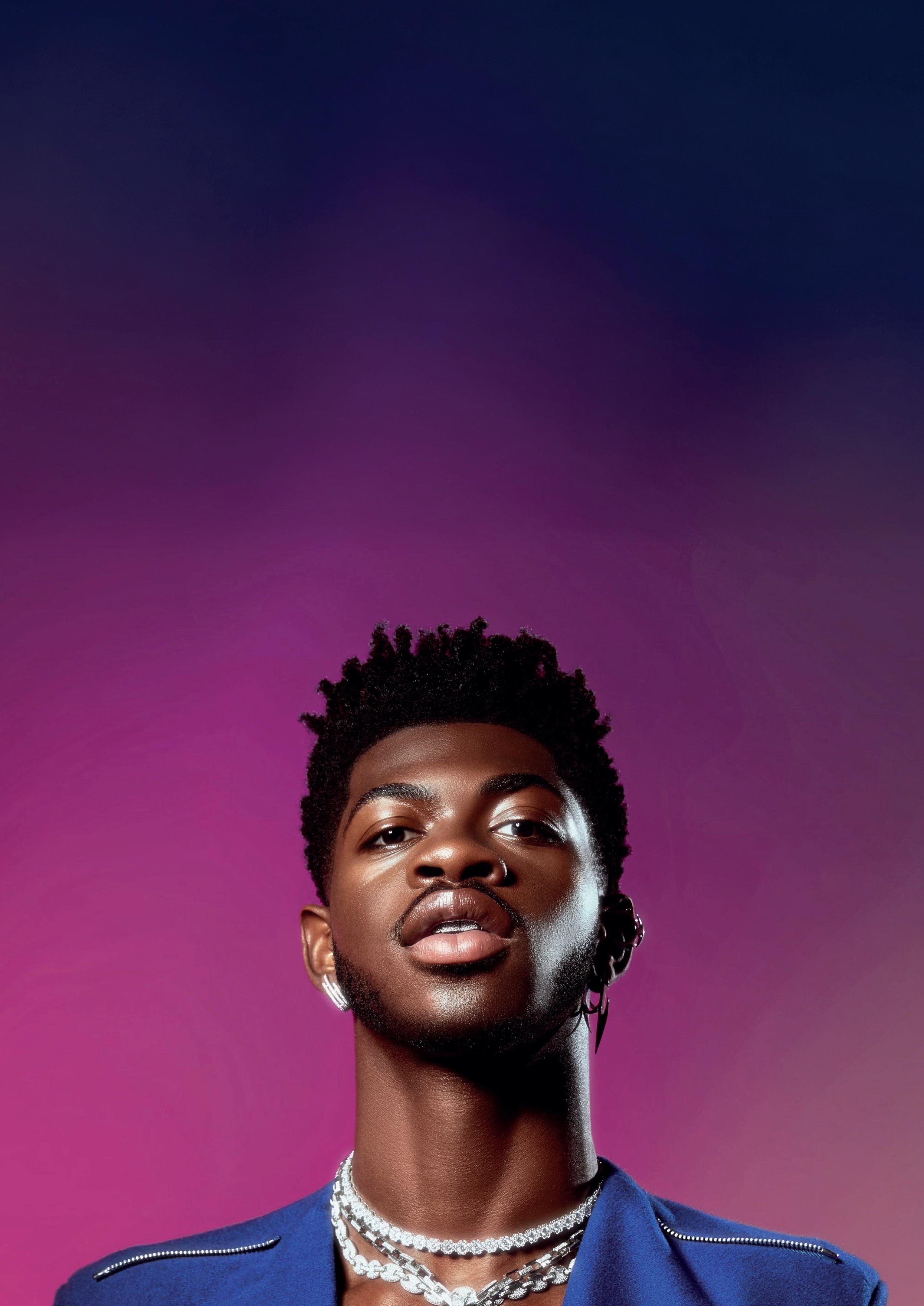
Social media has become a powerful force in reshaping the music industry, turning unknown artists into overnight sensations and redefining how audiences discover and connect with new sounds. Platforms like TikTok and Instagram now drive trends, push songs up the charts, and give musicians direct access to their fans—bypassing traditional industry gatekeepers. As algorithms become the new tastemakers, the journey to musical stardom is faster and more unpredictable than ever before
SSocial media has completely rewritten the script on music discovery, changing the way songs are shared and listened to, and transforming the way new artists are discovered. Platforms such as TikTok and Instagram have turned traditional music marketing on its head, providing opportunities to turn unknown artists into trending overnight sensations. What used to take years of work within the industry can now happen in days, even hours.
TikTok’s influence on the music industry is undeniable. With over 1 billion monthly active users, the platform has become the epicentre of viral music trends, driving no.1 hits and positioning undiscovered talent into the public eye.
Artists like Lil Nas X and Olivia Rodrigo owe much of their early success to the platform’s unique algorithm, which serves content based on user engagement and interests, as opposed to follower count.
Lil Nas X’s ‘Old Town Road’ track initially gained traction on TikTok, where users began incorporating the song into viral dance challenges. This wave of user-generated content drove the song to mainstream recognition and eventually broke records on the Billboard charts.
While TikTok is geared towards short-form videos and catchy hooks, Instagram provides a more dynamic way for artists to build a personal brand and engage directly with their audience and collaborate with other musicians, influencers, or brands.
Instagram’s Stories feature has become a go-to for artists to share updates and exclusive content in a way that feels more personable. Instagram Reels, which mirrors TikTok’s short-form video style, has added yet another avenue for songs to go viral, allowing musicians to showcase their work in creative, highly shareable formats.
It’s not just musicians that are adapting to the changes, the music industry is learning to adjust too. In 2021, Billboard announced it will consider Facebook video streams into its chart calculations for licensed music videos. Unlike in previous decades, where success often hinged on access to studios or industry connections, today’s aspiring artists have the power to reach millions with one post.
This shift has allowed for the discovery of diverse talent that might have previously gone under the radar. Emerging artists from different genres and cultural backgrounds can now find their audience organically, bypassing traditional gatekeepers like record labels or agents.
the Algorithms
Achieving success on TikTok or Instagram isn’t purely accidental. Understanding how to work with the algorithms on these platforms, whether that be identifying trends, including popular hashtags,
optimising for social media search engines or collaborating with other accounts, plays a huge role in determining how far the content will go.
Consistency plays a huge role too. Those who post frequently and engage with their followers are more likely to be rewarded by the platform’s algorithms. Artists will often use these platforms to test out snippets of new songs or ideas, gauging audience reactions before an official release.
The fast-paced nature of social media means that attention needs to be captured quickly and trends are often short-lived. Artists who find success with one viral hit often face the pressure to replicate that success, which can be difficult to maintain.
There’s also the question of longevity. While a viral song can lead to immediate fame, converting that viral moment into a sustainable music career requires commitment, creativity, and an ability to continuously engage their audience over time.
Ultimately, social media platforms like TikTok and Instagram have revolutionised music discovery. They’ve allowed artists to skip the traditional industry gatekeepers and reach their audience directly, turning them into household names almost overnight.
As these platforms evolve, so will the ways in which we discover, share and listen to new music. Social media will continue to play a central role in shaping the future of the entertainment industry.
When done right, social media can provide endless opportunities to connect with listeners, transform trends, and define the next era of music.


As two global icons unite, Formula 1 and LVMH have announced a groundbreaking 10-year partnership set to reshape the worlds of luxury and motorsport. Starting in 2025, this collaboration will bring together the precision of high-speed racing and the artistry of timeless craftsmanship, promising unparalleled experiences for fans and clients alike

IIn an exciting development for both the luxury and sporting worlds, Formula 1 and LVMH have entered into a landmark 10-year global partnership starting in 2025. This collaboration marks the coming together of two global titans—one the pinnacle of motorsport, the other a leader in luxury goods— with the shared ambition of enhancing both industries’ appeal through creativity, innovation, and excellence. The agreement will see several of LVMH’s renowned Maisons, including Louis Vuitton, Moët Hennessy, and TAG Heuer, take part in the venture.
This significant partnership arrives as Formula 1 approaches its 75th anniversary, a momentous occasion underscored by the sport’s current surge in popularity. The agreement is set to ignite fresh enthusiasm for both Formula 1 and LVMH, ushering in a new era where motorsport and luxury craftsmanship intersect, providing a bridge between sport and entertainment like never before.
Central to the agreement is the shared ethos of both Formula 1 and LVMH. The luxury group’s unwavering commitment to craftsmanship and innovation aligns seamlessly with Formula 1’s focus on high-performance, precision, and technological advancement. Through this collaboration, Formula 1 fans and LVMH clients will enjoy exclusive experiences that blend the intensity of motorsport with the sophistication of world-class luxury.
LVMH brings its deep-rooted savoir-faire to Formula 1, with each of its participating Maisons infusing their unique heritage and craftsmanship into the partnership. The synergy between LVMH’s expertise in fine goods and Formula 1’s high-octane world of racing is set to manifest through bespoke activations, limited edition creations, and tailored hospitality experiences at race events around the globe.
Both Formula 1 and LVMH are eager to build on their historical involvement with one another. LVMH’s Maisons, such as TAG Heuer, have long been associated with motorsport, particularly Formula 1. This collaboration allows both entities to write a
new chapter in their shared history, offering unprecedented opportunities for engagement across markets, fans, and luxury consumers.
Further details surrounding the partnership will be revealed in early 2025, but the anticipation is already palpable. The President and CEO of Liberty Media, Greg Maffei, emphasised the growth potential of this relationship, stating: “LVMH and Formula 1 are two global brands that consistently push the boundaries of creativity and innovation, values core to Liberty Media.” Maffei expressed enthusiasm for the expansion of their commercial dealings, noting that the partnership aligns with Liberty Media’s vision of expanding Formula 1’s global platform.
Bernard Arnault, Chairman and CEO of LVMH, echoed this sentiment, highlighting the shared pursuit of excellence that drives both Formula 1 and LVMH. “In motorsport as in fashion, watchmaking or wines and spirits, every detail counts on the path to success,” Arnault remarked. He pointed to the shared values of passion, precision, and boundary-breaking innovation that underpin both Formula 1 and LVMH’s leading Maisons, cementing this as a partnership rooted in mutual respect and ambition.
Formula 1’s President and CEO, Stefano Domenicali, underscored the strategic importance of this collaboration, especially as Formula 1 continues to broaden its global reach. He noted that LVMH’s global influence, along with the diversity and strength of its Maisons, make it the perfect partner to further elevate the fan experience while celebrating the sport’s rich heritage.
Frédéric Arnault, CEO of LVMH Watches, highlighted the shared values between Formula 1 and LVMH, noting the sport’s vibrant and innovative nature. He emphasised the experiential dimension that this partnership seeks to enhance, remarking: “We are only at the very beginning of this partnership, but the seasons that await us promise to be extraordinary.”
This historic partnership between Formula 1 and LVMH promises to redefine the intersection of luxury and sport, creating new avenues for both industries to innovate and captivate audiences across the globe.

Chairman & CEO of Universal Music Publishing Group
Jody Gerson stands at the forefront of the global music industry, shaping its future with a blend of strategic brilliance and unwavering commitment to creativity. As Chairman and CEO of Universal Music Publishing Group, she has transformed the company into a billion-dollar powerhouse, redefining the landscape for songwriters and music publishers alike. A trailblazer for women in leadership, Gerson’s vision and influence extend far beyond the boardroom, making her one of the most respected and impactful figures in the entertainment business today
JJody Gerson is widely regarded as one of the most influential figures in the global music industry. As Chairman and CEO of Universal Music Publishing Group (UMPG), she has transformed the company into a billion-dollar business and solidified its position as the world’s leading home for songwriters. Under her visionary leadership, UMPG has seen remarkable growth, with a 76% increase in revenue since she took the helm in 2015. This impressive financial performance is just one facet of Gerson’s legacy, which encompasses both strategic innovation and an unwavering commitment to advancing the industry for songwriters and women in music.

A trailblazer in her field, Gerson holds the distinction of being the first female chairman of a global music company, as well as the first woman to be named CEO of a major music publisher. Her rise to the top has been built on more than three decades of experience in the industry, during which she has earned a reputation as one of music’s most respected and accomplished executives. Her role at UMPG has seen the signing of some of the most iconic names in music, including Bob Dylan, Elton John, Bruce Springsteen, Taylor Swift, Kendrick Lamar, Billie Eilish, and Harry Styles, among many others. Gerson’s stewardship has also included the historic acquisition of Bob Dylan’s vast music catalog, a landmark moment in the history of the publishing business.
Her ability to not only manage but also propel UMPG to new heights speaks to her strategic acumen and an intimate understanding of the evolving music landscape. Beyond revenue growth and acquisitions, Gerson has strengthened UMPG’s competitive edge by fostering a culture of creativity and inclusivity. The company now boasts an impressive roster of songwriters, from established legends to rising stars, all of whom benefit from Gerson’s forwardthinking approach.
Gerson’s leadership goes far beyond financial results. She is a staunch advocate for women’s empowerment and inclusion in the music industry. She co-founded She Is The Music, a non-profit
organisation dedicated to championing equality and inclusion for women, and serves on the boards of several influential organisations, including the USC Annenberg Inclusion Initiative, the Rock & Roll Hall of Fame, the National Music Publishers Association (NMPA), and The Archer School for Girls. Her efforts to elevate women in music have earned her widespread admiration and recognition.
Over the years, Gerson’s contributions to the music industry have not gone unnoticed. She has been named to numerous prestigious lists, including Billboard’s ‘Executive of the Year’ for the Power 100, Variety’s ‘Women’s Impact Report,’ and Fast Company’s ‘Most Creative People.’ In 2016, she was honoured with the March of Dimes Inspiring Woman of the Year Award, a testament to her leadership not only in business but also as a mother and role model.
Her influence is not confined to the boardroom alone. Gerson has also made her mark in film and television production. She has served as executive producer on a number of successful projects, including HBO’s The Bee Gees: How Can You Mend a Broken Heart, the Music Box series, and films such as Drumline and ATL. Her work in these areas demonstrates her ability to extend her creative vision beyond the confines of the music industry.
Before joining UMPG, Gerson held senior positions at Sony/ATV Music Publishing, where she was Co-President, and at EMI Music Publishing, where she revitalised the company’s east and west coast publishing divisions. These experiences, coupled with her deep industry knowledge, have shaped her into the highly regarded leader she is today.
Gerson’s career is a testament to what can be achieved through vision, determination, and a commitment to excellence. Her work continues to inspire both the next generation of music executives and songwriters, as well as the broader business community. As UMPG’s Chairman and CEO, she has set new benchmarks for success, and her leadership will undoubtedly leave an indelible mark on the music publishing industry for years to come.

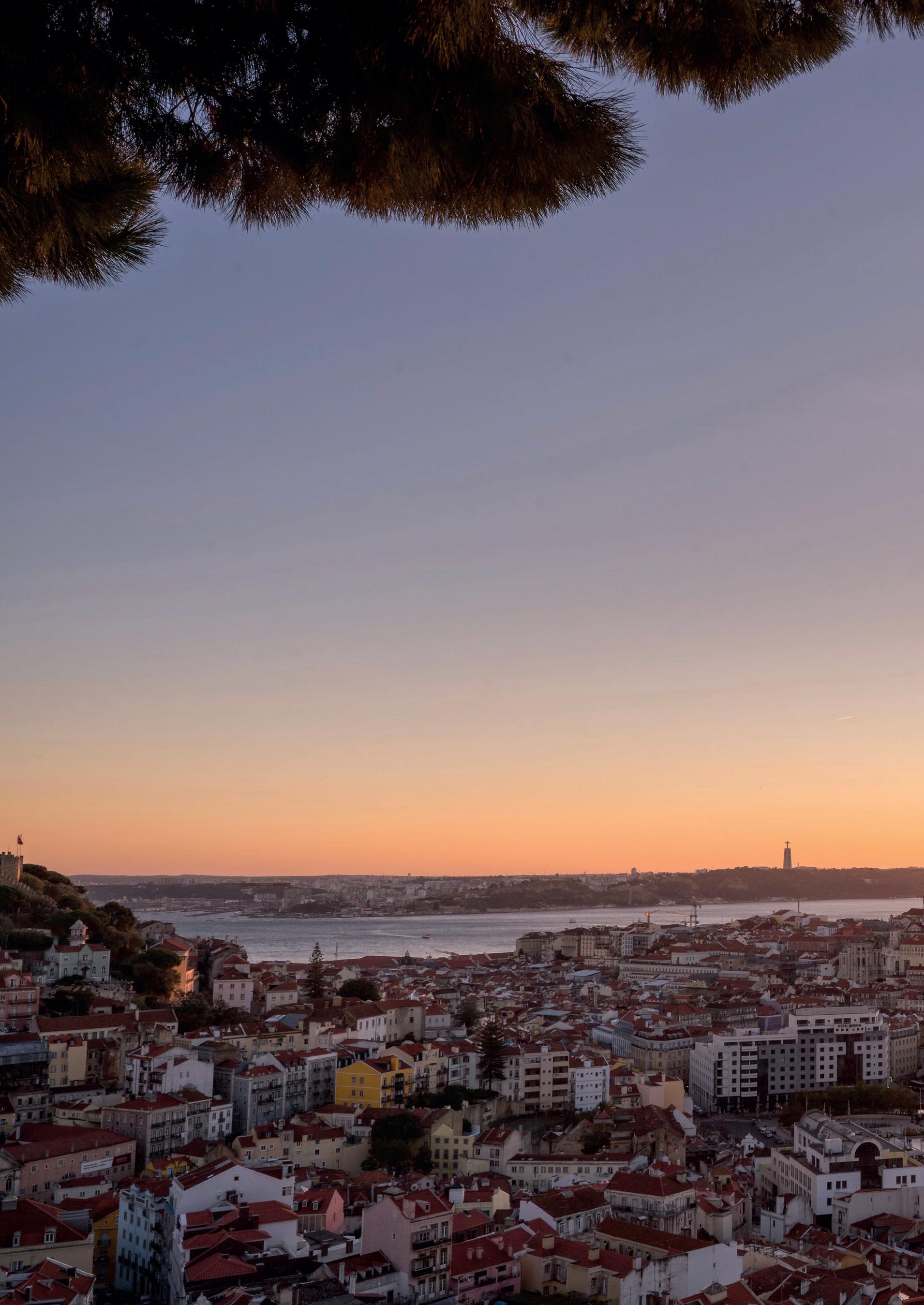

AAs Portugal’s capital emerges into a dynamic hub for global business, Lisbon balances centuries-old charm with modern innovation. This historic city, perched along the Atlantic coast, draws an increasing number of professionals who recognise its potential as both a strategic base and a destination for sophisticated leisure.
From the cobblestone streets of the Alfama district to the sleek offices of the Parque das Nações business quarter, Lisbon demonstrates remarkable dexterity in preserving its cultural heritage whilst embracing contemporary culture. The city’s growing reputation as a premier business destination is evidenced by its rapidly expanding startup ecosystem and the influx of international corporations establishing regional headquarters.
For the discerning traveller, Lisbon offers an array of refined experiences. Whether dining in Michelin-starred restaurants, discovering historic palaces converted into luxury hotels, or unwinding at exclusive rooftop lounges overlooking the Tagus River, the city provides a sophisticated backdrop for business and pleasure.
TAP Air Portugal is our airline of choice when it comes to effortless travel to Lisbon. Flying from Manchester, there are multiple daily flights to choose from, and being a partnering airline of aether, the journey can be elevated to the most luxurious heights. aether is a premium private terminal, that goes beyond the regular lounge experience. After relaxing in the comfortable seating, a chauffeur driven BMW whisks you away, directly to your plane, forgoing the usual queues, passengers are boarded straight away. TAP Air Portugal's fleet is modern comfortable, and offers the best levels of service travelling throughout Europe.
Best for: Stress free travel experience from Manchester Airport
Luxury travel takes a transformative leap forward as Manchester Airport unveils a pioneering private terminal that fundamentally re-imagines the airport experience. Starting from £90 per person, this exclusive facility offers a sophisticated sanctuary where chauffeur-driven transfers, private security screening, and award-winning dining by chef Adam Reid combine to create an experience previously reserved for private aviation.

The innovative terminal democratises luxury travel while eliminating traditional airport stress points. Guests enjoy private security and passport control, panoramic runway views, and premium amenities in an environment where staff consistently outnumber visitors. This groundbreaking approach to airport design proves that the journey to your destination can be as refined as your final resort.

Lisbon's luxury hotel landscape reflects the city's evolving status as a premier business destination. From meticulously restored palaces to contemporary design hotels, the accommodation options cater specifically to the needs of executive travellers. Private meeting spaces, dedicated business centres and personalised concierge services ensure seamless operations, while rooftop bars and fine dining restaurants provide elegant settings.
Best for: Palatial opulence in the heart of Lisbon
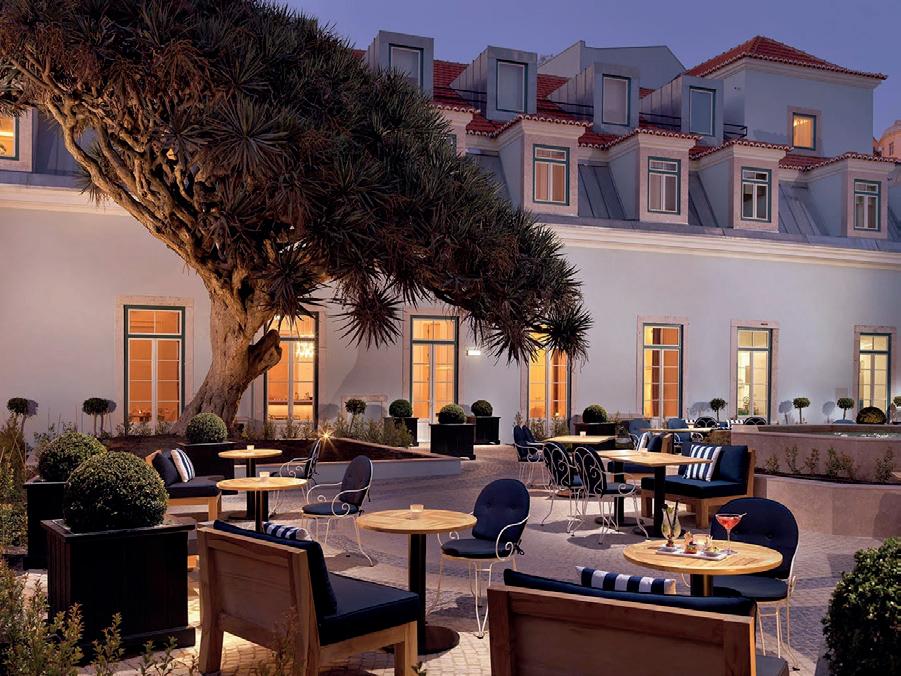
Lisbon’s historic heart welcomes The One Palácio da Anunciada, a masterfully restored 16th-century palace turned five-star hotel that stands as a testament to Portuguese architectural heritage. Located moments from Avenida da Liberdade, this 83-room property seamlessly blends historical elements with contemporary luxury through awardwinning designer Jaime Beriestain’s thoughtful renovation, which preserves original features including 18th-century flooring and hand-painted frescoes.

Behind the palace walls, guests discover a 2,500-square-metre garden featuring a protected dragon tree, one of Lisbon’s longest outdoor pools, and the tranquil Despacio Spa. The culinary journey unfolds across three venues, including the grand Condes de Ericeira restaurant and O Jardim Wine Bar, while the newly renovated Presidential Suite offers an unparalleled luxury experience with its private chef’s kitchen and sophisticated living spaces. The property’s prime location on rare flat terrain provides an ideal base for exploring Lisbon’s cultural landmarks while enjoying five-star comforts and impeccable service.

Best for: Business trips and timeless elegance
Nestled along Portugal’s most prestigious thoroughfare, the Tivoli Avenida Liberdade Lisboa has graced Lisbon’s skyline since 1933. This grande dame of hospitality seamlessly marries its storied heritage with contemporary luxury, offering 285 sophisticated rooms, including a magnificent 270-square-metre Presidential Suite adorned with pieces from the Ricardo Espírito Santo Foundation.
Beyond its elegant accommodation, the property presents a world-class Anantara Spa, blending Thai and Portuguese wellness traditions, while its culinary offerings range from the seafood excellence of Cervejaria Liberdade to the panoramic sophistication of SEEN Lisboa. Under the guidance of Chefpreneur Olivier da Costa, the hotel continues to attract global luminaries seeking the finest expression of Portuguese hospitality in the heart of Lisbon’s luxury district.




Lisbon's dining scene captures the essence of Portugal's rich culinary heritage while embracing bold, contemporary directions. From intimate tascas serving generations-old recipes to sophisticated venues earning international acclaim, the city's restaurants showcase the finest local ingredients and culinary craftsmanship. Michelin-starred fine dining restaurants sit comfortably alongside traditional eateries, each contributing to a gastronomic landscape that positions Lisbon among Europe's most exciting dining destinations

Best For: A sophisticated glamorous Asian dining experience
Lisbon’s gastronomic scene reaches new heights with JNcQUOI Asia, a sophisticated establishment on the prestigious Avenida da Liberdade that artfully bridges Portugal’s historic maritime legacy with contemporary Asian luxury. This ambitious venture from the Amorim Luxury Group seamlessly blends four distinct Asian cuisines under the guidance of celebrated chefs, including Michelin-starred David Thompson as culinary adviser.

Beyond its striking golden dragon centrepiece and three distinctive dining spaces, JNcQUOI Asia offers an experience that transcends traditional dining. The venue houses a designer boutique featuring prestigious fashion brands, a secret entrance to the exclusive Frou Frou Chinese restaurant, and the sophisticated Ganda Bar that transforms into a nightlife destination. With exceptional cocktails, technically precise cuisine, and an atmosphere that captures both Portuguese heritage and Asian refinement, JNcQUOI Asia stands as a cultural bridge between East and West in Lisbon’s luxury landscape.

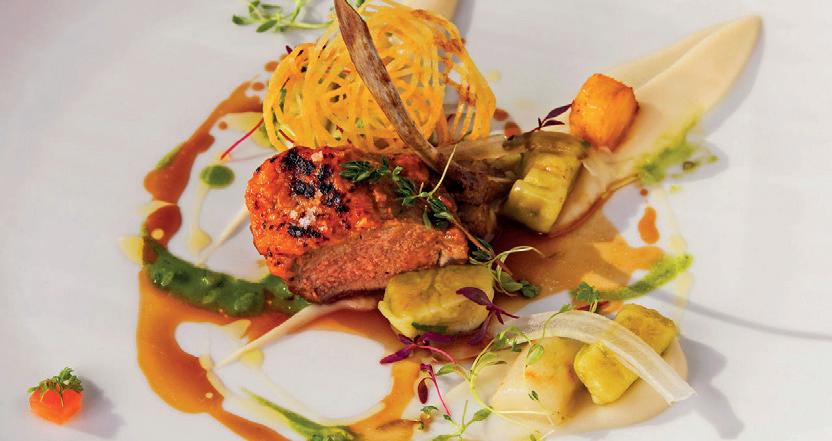
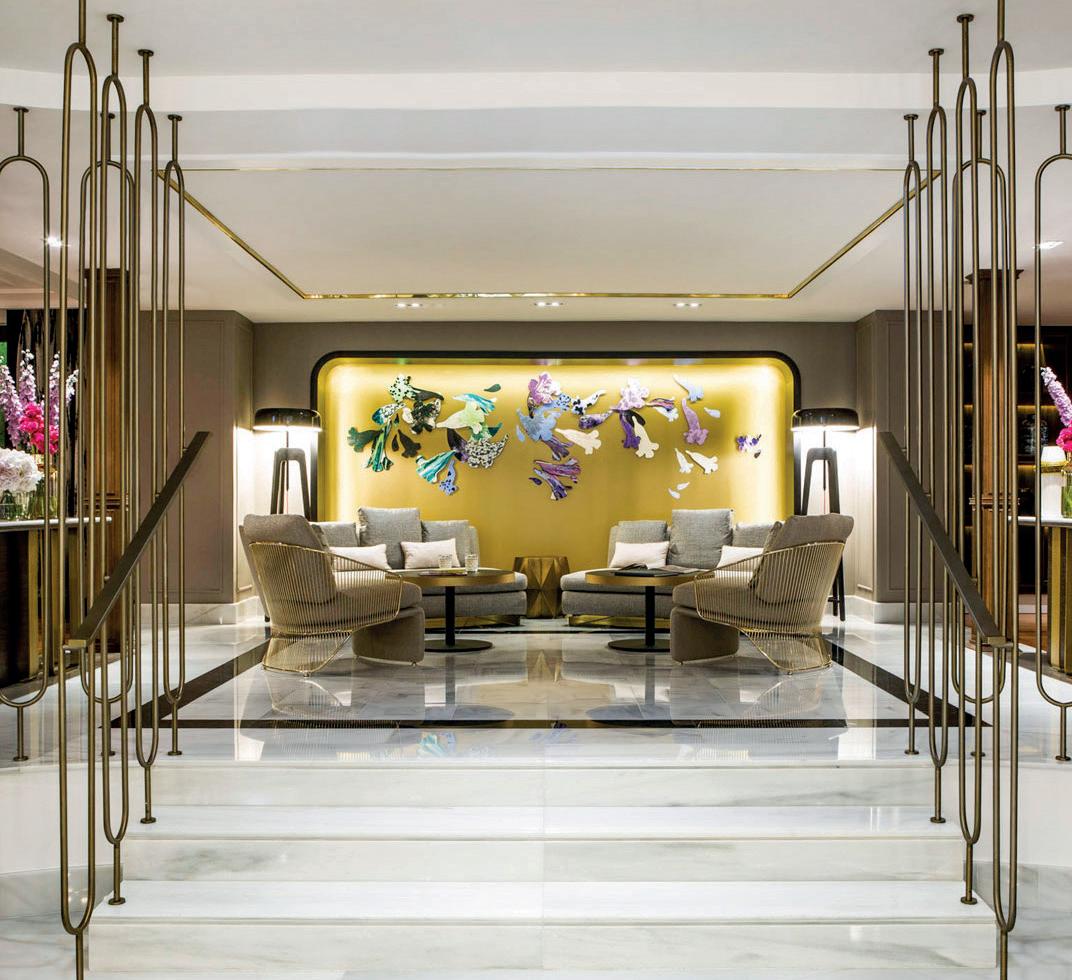
Perched atop Parque Eduardo VII in a striking modernist building, Eleven restaurant has earned its place as Lisbon’s premier dining destination. Under the masterful guidance of German Chef Joachim Koerper, whose culinary journey spans Europe’s most prestigious kitchens, this Michelin-starred establishment offers a sophisticated blend of Mediterranean cuisine crafted from the finest local ingredients.
From the theatrical tableside preparation of crayfish carpaccio to the perfectly executed passion fruit soufflé, each dish demonstrates Koerper’s commitment to culinary excellence. The restaurant’s four distinct menus, complemented by sweeping views of the Tagus River and the Portuguese capital, create an unparalleled dining experience that has maintained its position at the forefront of Lisbon’s competitive fine dining scene since earning its Michelin star in 2004.


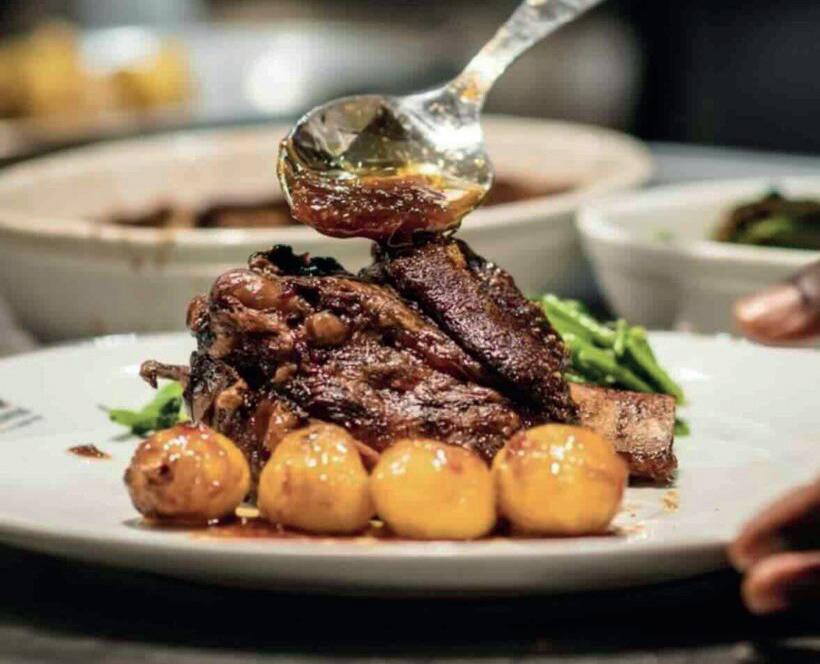
Solar dos Presuntos presents a compelling study in sustainable luxury hospitality, demonstrating how heritage dining concepts maintain market leadership in an evolving premium sector. Since 1974, this distinguished establishment has balanced traditional Minho regional cuisine with sophisticated operational delivery, attracting both corporate clientele and high-net-worth individuals to its 200-seat venue near Rossio Square.
Under Executive Chef Hugo Araújo’s stewardship, the establishment continues to demonstrate commercial excellence through precise menu engineering, strategic procurement practices, and an acclaimed wine programme. The business model, which combines premium positioning with authentic regional offerings, provides valuable insights for luxury sector operators seeking to maintain market relevance whilst preserving heritage values. Notable patronage from global figures such as Cristiano Ronaldo and David Beckham further validates the establishment’s sustained appeal in Lisbon’s competitive dining landscape.

MESA DE FRADES
Beyond the bustling streets of Lisbon’s Alfama district lies a cultural jewel that captures the essence of Portuguese heritage. Mesa de Frades, set within an 18th-century chapel commissioned by King Joseph of Portugal, stands as a testament to the seamless fusion of historical preservation and living tradition. Each evening, this intimate venue transforms into a sanctuary of Fado music, where established performers and emerging talents share their artistry beneath centuries-old royal tiles.
The venue’s evolution from royal chapel to charcoal works, then tavern, and finally to its current incarnation as a premier cultural destination, mirrors Portugal’s own journey through time. Under the guidance of musician Pedro de Castro since 2005, Mesa de Frades offers guests an unparalleled evening of traditional Portuguese cuisine followed by soul-stirring Fado performances. Guests are invited to explore the venue’s rich history, architectural significance, and its vital role in preserving and advancing Portuguese cultural heritage, unveiling one of Lisbon’s most distinguished establishments.




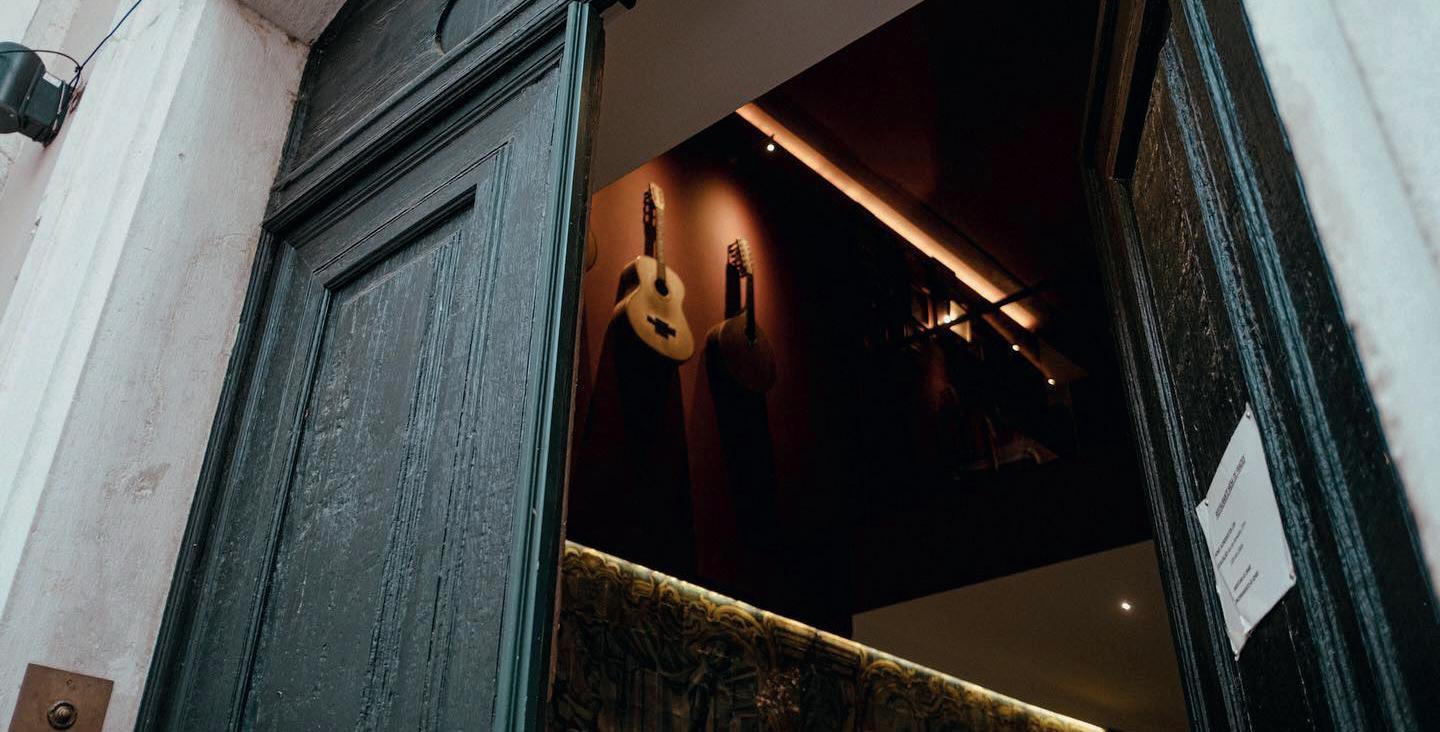

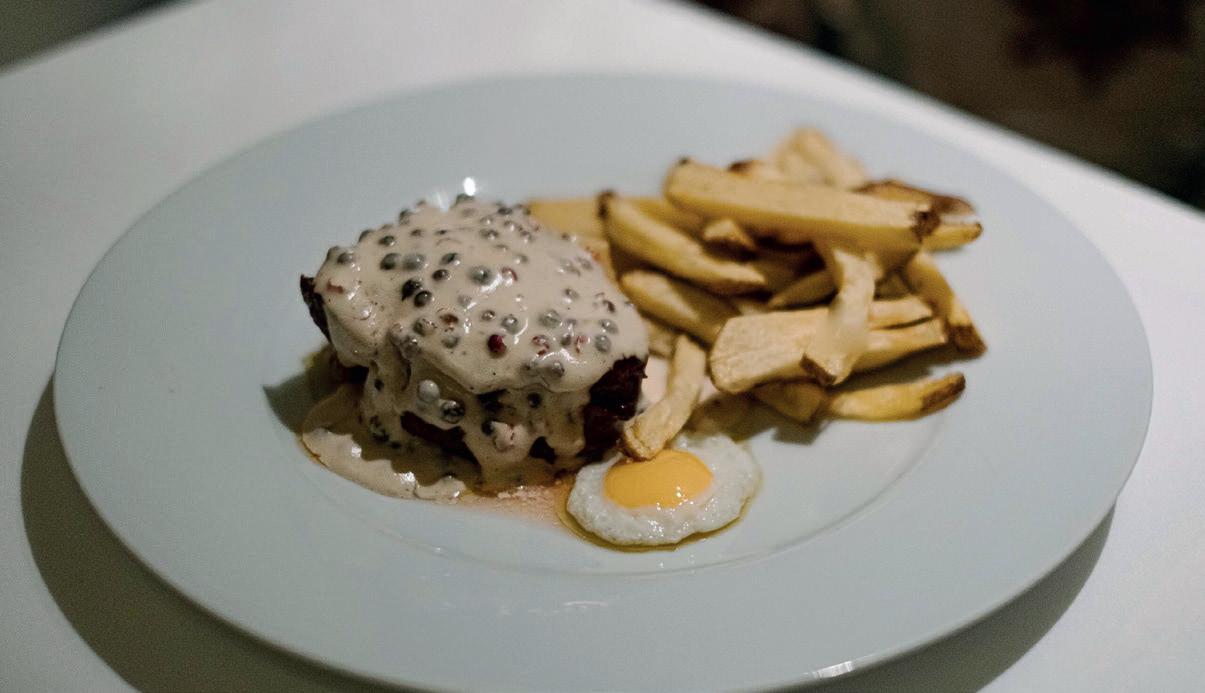
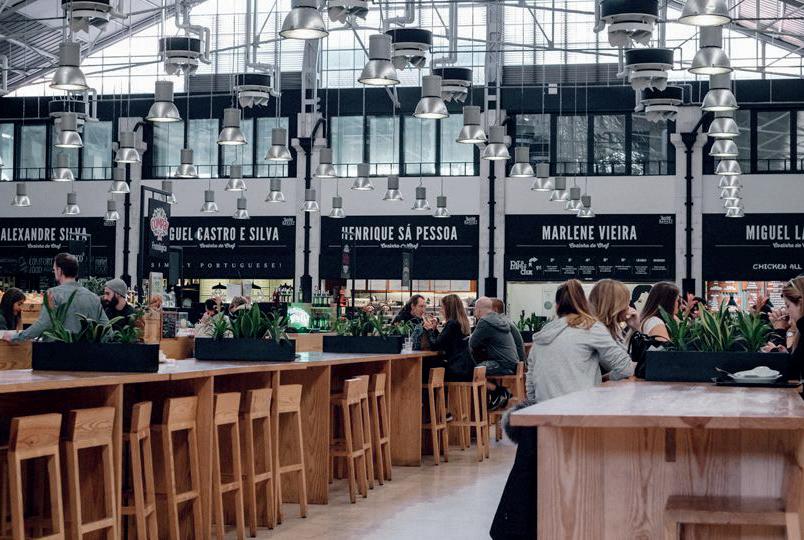
Best for: All-inclusive contemporary dining
Lisbon’s culinary landscape has been transformed by an ambitious market hall concept that seamlessly blends heritage with contemporary dining excellence. The historic Mercado da Ribeira Nova, a 19th-century architectural landmark, now houses a carefully curated collection of the city’s most distinguished restaurants alongside traditional market vendors, creating an unprecedented fusion of gastronomic experiences.
The venue’s stringent selection process ensures only the highest calibre establishments secure a position within its storied walls, from the acclaimed steaks of Café de São Bento to Sea Me’s innovative Portuguese-Japanese fusion cuisine. This sophisticated reimagining of market dining has not only elevated Lisbon’s culinary status but has created a blueprint for modern gastronomic destinations worldwide, demonstrating how thoughtful curation and commitment to quality can reinvent traditional spaces for discerning contemporary audiences.



Best for: Cool and sophisticated rooftop vibes
High above Lisbon’s most prestigious avenue, a culinary masterpiece has redefined the city’s fine dining scene. Helmed by renowned Chefpreneur Olivier da Costa, this ninth-floor establishment combines panoramic views with architectural brilliance, offering an experience that transcends traditional gastronomy.
The venue’s sophisticated fusion of Mediterranean and Japanese influences, coupled with its Art Deco elegance and masterful mixology programme, has established it as the preferred destination for business executives and discerning diners. From its striking 360-degree central bar to the adjacent rooftop terrace overlooking historic St. Jorge’s Castle, this elevated sanctuary presents a compelling proposition for those seeking excellence in Portugal’s vibrant capital.
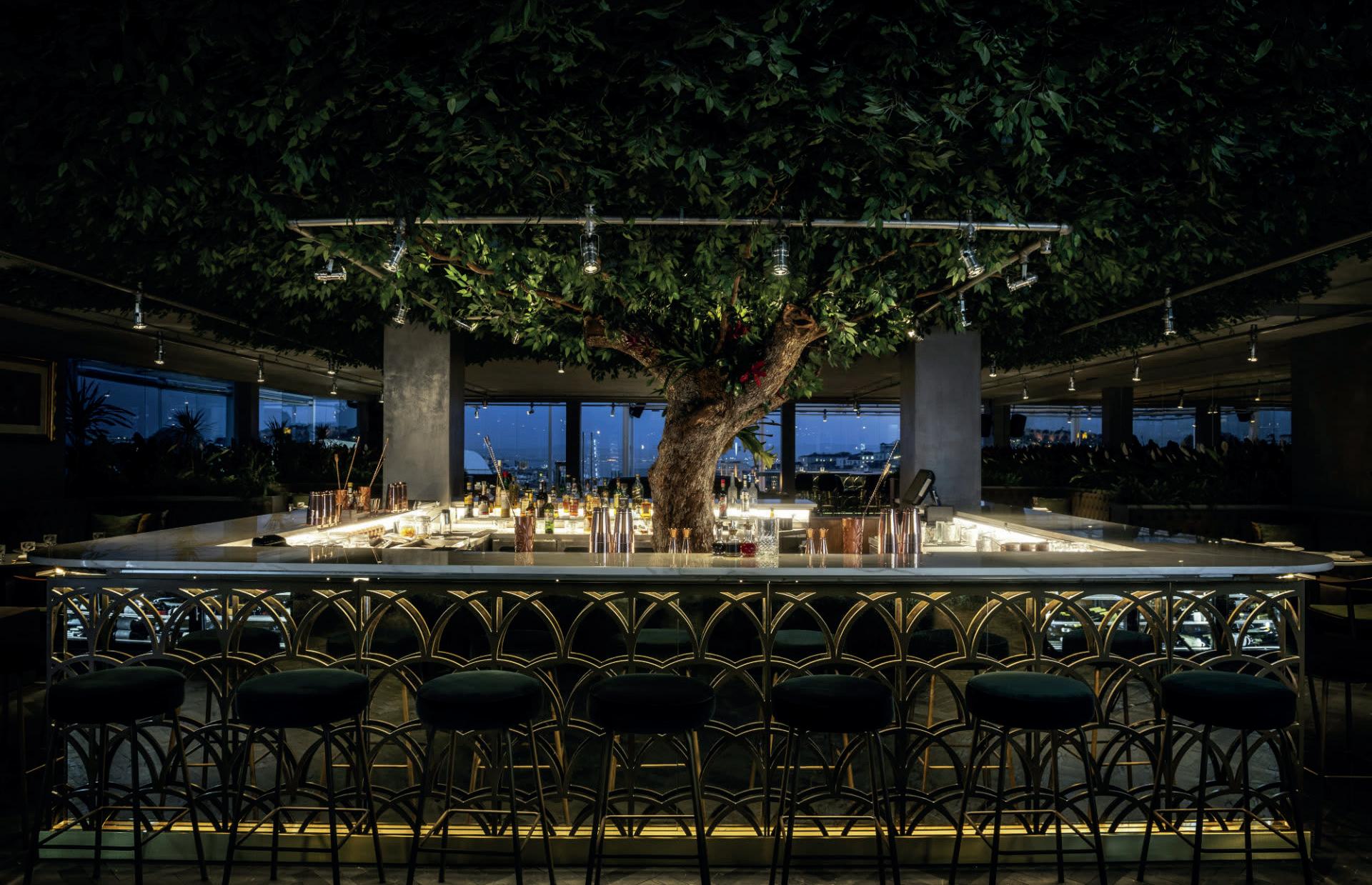



Northcote epitomises refined luxury, seamlessly blending exquisite hospitality with culinary artistry in the stunning Ribble Valley. Guests are invited to unwind in beautifully appointed rooms while savouring the innovative dishes of Michelin-starred Chef Lisa Goodwin-Allen. With a focus on seasonal produce, Northcote offers a harmonious escape for those seeking relaxation and indulgence in a picturesque setting



NNestled in the rolling hills of the Ribble Valley, Northcote is a beacon of refined luxury and culinary excellence. This redbrick manor, originally built in 1880 as a private residence, is perched on the edge of the Forest of Bowland, an Area of Outstanding Natural Beauty, offering visitors a serene backdrop for their stay. It combines modern sophistication with timeless charm, attracting those who seek not only relaxation but also an extraordinary dining experience.
The hotel is home to 26 individually designed rooms, spread between the historic manor house and the contemporary Garden Lodge. These elegantly furnished rooms offer a perfect blend of comfort and style, with traditional décor in the main house and a more modern flair in the Garden Lodge. Whether staying in a cosy classic room or the more opulent suites, all rooms come with a range of luxury amenities and stunning views of the surrounding countryside. The Garden Lodge’s suites, in particular, provide expansive space with balconies or terraces and thoughtful details like living flame fires, creating a warm, intimate atmosphere.
Michelin Star Dining
Northcote has firmly established itself as a culinary destination, led by Michelin-starred Executive Chef Lisa Goodwin-Allen, whose passion for showcasing the finest seasonal and locally sourced ingredients has earned the restaurant accolades, including the title of the UK’s Best Fine Dining Restaurant for 2024. GoodwinAllen’s menus are an exquisite celebration of Lancashire’s natural bounty, where each dish, from West Coast crab to Scottish venison, is a testament to her innovative approach to British cuisine. Diners are invited to indulge in a five-course seasonal gourmet menu, expertly paired with fine wines, in the 60-cover restaurant under a glittering crystal chandelier.
Guests can enjoy a culinary journey that starts with pre-dinner canapés in the hotel’s cosy cocktail bar and ends with a handcrafted dessert like the unique ‘Coffee’ dish, featuring sesame, Valrhona chocolate, and winter leaves. For those who want to witness the artistry behind each dish, Northcote offers a frontrow seat at the Chef’s Table, where up to 16 guests can engage directly with the chefs and watch the culinary team in action through glass doors.
Once seated in the main dining room, guests are presented with the seasonal five-course Gourmet Menu, a celebration of locally sourced ingredients and the changing rhythms of the British landscape. This menu is a true reflection of Goodwin-Allen’s commitment to using the finest seasonal produce, with dishes that highlight the bounty of Lancashire and beyond. For those seeking to elevate their meal further, an expertly curated wine pairing is available, providing an additional layer of complexity to each course.
The first course arrives—Forest Mushroom Parfait with pickled walnut, mushroom tea, and tarragon flaky bread. The dish is as visually stunning as it is delicious, with earthy, rich flavours beautifully balanced by the tang of the pickled walnut and the delicate crunch of the bread. The accompanying Évora White
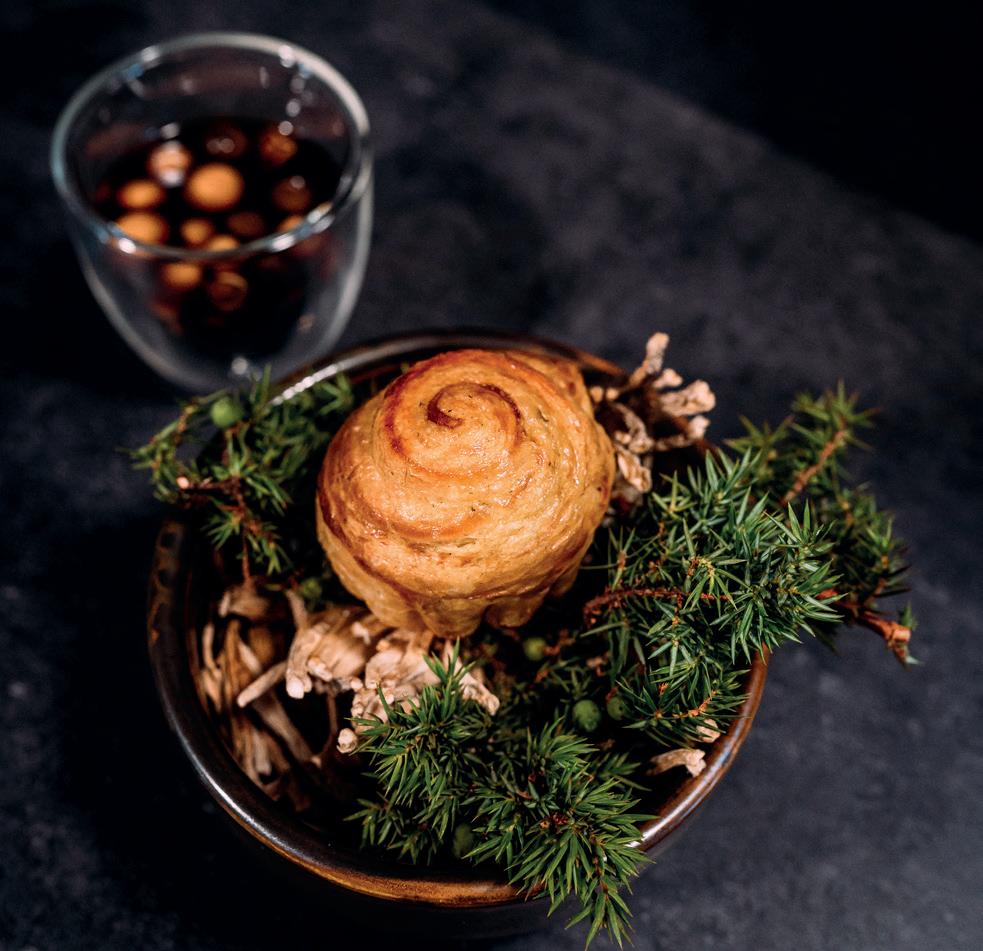
Vinho de Talha from Portugal complements the dish perfectly, its fresh, crisp notes enhancing the depth of the mushrooms.
Next, the Squab Pigeon with damson molasses, smoked bacon, and spelt offers a more robust flavour profile. The pigeon, cooked to perfection, is tender and succulent, while the sweetness of the damson and the smokiness of the bacon create a harmonious balance. Paired with a Pinot Grigio Riserva Ramato from Italy, the dish becomes a masterclass in contrasting textures and flavours, each element enhancing the other.
The seafood course is a true standout—North Sea Cod with taramasalata, kalamansi, and hazelnut. The cod is delicately cooked, with the light, creamy taramasalata providing a silky counterpoint to the bright citrus of the kalamansi. A Directors Reserve from South Africa elevates this course, offering a bold yet balanced accompaniment to the refined flavours of the fish.
As the meal progresses, the Scottish Venison takes centre stage, served with beetroot, caramelised squash, and blackcurrant. The venison, tender and rich, is perfectly complemented by the sweetness of the squash and the tartness of the blackcurrant. Paired with a robust Zinfandel from Sonoma County, the dish embodies the heartiness of autumn, bringing warmth and depth to the palate.
For dessert, the aptly named Coffee dish arrives—a delicate composition of sesame, Valrhona chocolate, and winter leaves. The interplay of textures is masterful, with the creaminess of the chocolate offset by the crispness of the sesame. The dessert is paired with a Ratafia Champenois from France, its sweet, nutty notes providing the perfect finale to an extraordinary meal.
Throughout the dining experience, the service is impeccable— attentive yet unobtrusive, with each course introduced with precision and care. The staff’s knowledge of both the food and wine is impressive, and their passion for delivering a memorable dining experience is evident in every interaction. The theatre of the meal is heightened as dishes are presented with an air of sophistication, from the opening amuse-bouche to the final flourish of petit fours served with coffee.
For those seeking a more immersive experience, the Chef’s Table at Northcote offers the opportunity to dine in the heart of the kitchen. Here, guests can witness first-hand the artistry of Goodwin-Allen and her team, engaging with the chefs as they craft each dish. This exclusive setting allows diners to fully appreciate the skill and dedication that goes into each plate, adding an extra layer of intimacy to an already remarkable experience.
The dedication to local produce is a key element of the Northcote ethos. Each ingredient is sourced with care, ensuring that the flavours on the plate are as fresh and vibrant as possible. Whether it’s the venison from the Scottish Highlands or the mushrooms from the nearby forest, the connection to the land is palpable in every bite.
Northcote’s dedication to impeccable service extends beyond its Michelin-starred restaurant. The hotel’s attentive staff ensure that every detail of the guest experience is handled with care, offering professional yet warm service. Each room is equipped with a booklet of local walks, and the hotel provides everything needed for a countryside retreat, from a boot room to gun cabinets for those venturing into the surrounding areas for hunting trips.
Situated just 12 miles from Preston, Northcote is ideally located for both rural and urban explorers. The Ribble Valley’s blend of history and natural beauty, combined with Northcote’s luxurious accommodation and world-class dining, makes it a destination like no other in the British Isles. As a proud member of PoB Hotels, Northcote stands alongside the finest independent hotels in the UK, offering guests access to an exclusive collection of properties known for their excellence.
Northcote’s accolades are well deserved, with its restaurant being named the third-best fine dining destination in the world by Tripadvisor in 2024. Under the leadership of Lisa Goodwin-Allen, who has retained the hotel’s Michelin star since 2021, Northcote continues to set the bar for culinary innovation and excellence in hospitality. Goodwin-Allen’s rise in the culinary world, including her historic win on the BBC’s Great British Menu, has cemented her status as one of the UK’s leading chefs.
For those seeking a true escape, Northcote offers an immersive experience where luxury, tradition, and the beauty of nature come together. Whether guests are savouring an expertly prepared meal, enjoying the comforts of their suite, or exploring the vast beauty of Lancashire’s Ribble Valley, Northcote ensures an unforgettable and indulgent visit.



Nestled between Angel and Old Street, nhow London boldly re-imagines the modern hotel experience. This 190-room property, curated in partnership with Shoreditch's Jealous Gallery, delivers a masterclass in contemporary hospitality where avant-garde design meets corporate excellence
UUpon arrival, the property’s modest exterior belies its transformative interior aesthetic. The reception area immediately establishes nhow’s design credentials through an ambitious artistic programme that permeates every aspect of the guest experience. This commitment to visual innovation extends throughout the property, with each floor featuring residential-style room entrances that cleverly reference domestic architecture—a deliberate strategy to enhance guest comfort and create a genuine sense of place.
The accommodation offering demonstrates particular strength in its attention to detail. Guest rooms feature contemporary design elements balanced with premium amenities, including extensive in-room refreshment options and thoughtfully curated comfort items. Sound insulation proves exceptional, ensuring optimal conditions for both leisure and business travellers.
While the property’s artistic emphasis might suggest a purely lifestyle-oriented positioning, nhow London has executed a sophisticated dual-market strategy. The corporate sector receives particular consideration through purpose-designed meeting facilities that balance aesthetic appeal with technological capability. This is complemented by a fully equipped TechnoGym fitness centre and a digital service interface that streamlines guest interactions through QR-enabled functionality.



The property’s food and beverage concept, Guilty London, emerges as a significant differentiator in the market. The restaurant demonstrates remarkable sophistication in both its culinary execution and service delivery. The carefully constructed menu balances accessibility with innovation, while the wine programme reflects considerable expertise in its curation and presentation.
Despite its location requiring a ten-minute walk from nearest transport links, nhow London has established a compelling proposition in the capital’s competitive hospitality sector. The property successfully bridges the gap between design-led lifestyle hotels and traditional business accommodation, setting new standards for guest experience in both segments.
The establishment represents a significant evolution in urban hotel development, demonstrating how thoughtful design integration can enhance rather than compromise operational excellence. For the discerning business traveller, nhow London offers a refreshing alternative to conventional corporate accommodation, while maintaining the essential elements of premium service delivery and professional functionality.

Escape the hustle and bustle of daily life and discover the perfect retreat tucked away in the heart of Somerset. Fordscroft Cottages offers a serene hideaway where you can unwind, reconnect with nature, and indulge in cosy comforts. From tranquil woodland walks to coastal adventures, Mike Jennings discovers how this charming getaway promises the ideal setting to reset and recharge
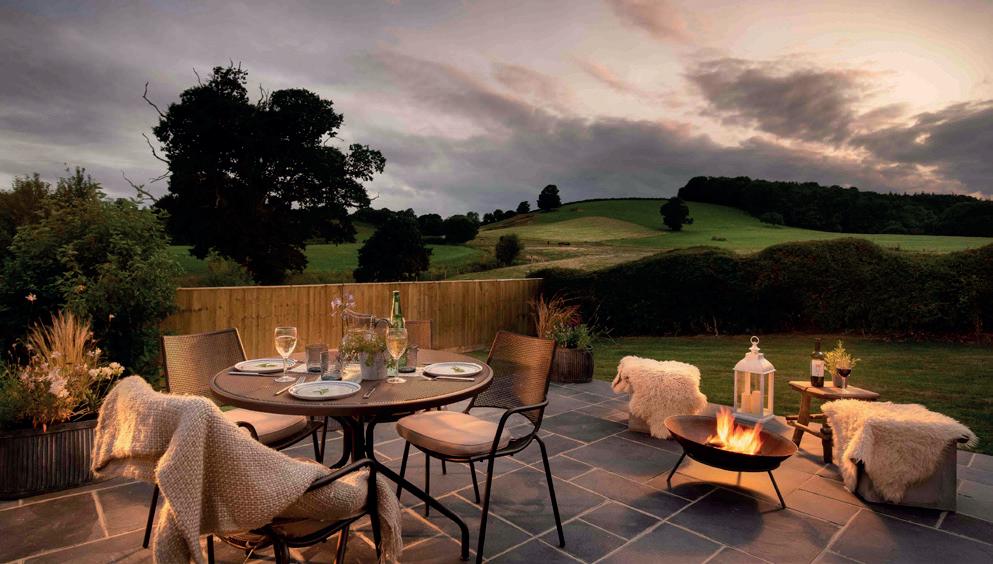



AAs the Christmas season approaches, it’s important to squeeze in a small break to reset and prepare for the holiday madness! We all lead busy lives, and taking time out to breathe and focus on ourselves is crucial. Retreats are becoming popular as the perfect setting to recharge.
After a good search through the web, I found a place that ticked all the boxes for an ideal retreat, allowing a much-needed escape to the middle of nowhere while staying close enough to enjoy a coastal walk, a hearty Sunday roast, and a great pint!
Crewkerne, nestled in the stunning county of Somerset, has a population of only 7,000 people, offering the perfect opportunity to get away. It’s a charming town with cosy village pubs, small shops, and woodland walks. A 30-minute drive will take you to Lyme Regis and the Jurassic Coast, adding more to explore.
I booked a three-night stay at the stunning Fordscroft Cottages. We stayed in “The Hideaway,” arguably the best property onsite. The cottage is laid out on one floor with a kitchen, dining area, fireplace (with an honesty box for firewood), an extremely comfortable king-sized bed, and a bathroom with a shower and a free-standing bathtub. Outside, there’s a private terrace with a fire pit and a wood-fired hot tub.
We arrived to the sounds of Classic FM playing softly. The property was clean, cosy, inviting, warm, well-equipped, and full of character—every box ticked! With only five properties on the plot, there’s a clear message to relax and recharge. “The Barn” on-site offers a modern gym, pool table, table tennis, and plenty of space for yoga and Pilates. Adjacent to it is a sauna and a coldwater plunge for the brave. Guests are asked to book their own slots in the barn to ensure privacy.
With the fire lit, a cheese and meat board prepared, wine breathing, and “Ol’ Blue Eyes” playing in the background, the scene was set for the perfect cosy night. Outside, not a sound could be heard, and with the stars shining above, we knew we’d found our retreat.
The next morning, we woke up after the best night’s sleep to the sound of birds chirping and the occasional cow mooing—a refreshing change from the usual phone alarm! We took a drive down to the Jurassic Coast to experience the breathtaking sandstone cliffs, enjoying a brisk coastal walk near the filming location of the TV drama Broadchurch. Further along, Lyme Regis awaits all fossil enthusiasts; the largest dinosaur fossil discovered here is the Pliosaur, a marine reptile from 150 million years ago with a skull measuring over 2 meters!
After a refreshing pint of Somerset cider, we drove back to our
hideaway for dinner. We tried out the wood-fired hot tub (just a note—it takes about three hours to reach the perfect temperature, so plan accordingly). There’s nothing quite like sitting in a hot tub under the stars with a big glass of red wine—absolute perfection.
We woke up to another great night’s sleep and decided to test out the gym. With basic but modern equipment, we enjoyed a good workout before heading back to the Hideaway to relax. We then decided to do nothing for the rest of the day, and it was fantastic! With a book in hand and zero distractions, it was pure bliss.
For dinner, we had booked a table at the highly recommended Lord Poulett Arms. Established in 1680, this traditional yet stylish thatched pub was a real treat. Roaring fires, welcoming staff, and a bustling atmosphere—this place has it all. After a hearty pint of local ale at the bar, we were seated at a gorgeous window-side table. We both opted for the roast beef, and as Mrs. J is coeliac, she’s usually prepared for the disappointment of no Yorkshire pudding. Not here! The chef made homemade gluten-free Yorkies filled with braised beef, taking the roast to a whole new level. Paired with a stunning glass of Primitivo, had we found the perfect oasis?
A special mention goes to John, the manager, famed for his loud shirts—you definitely won’t miss him! We finished with a generous serving of sticky toffee pudding (also gluten-free), which hit the spot and prepared us for a well-earned coastal walk to burn some of those calories.
We walked along the cliff path, taking in the breathtaking views as waves crashed below. The sea air is invigorating and does wonders for the mind.
Back at our hideaway, we lit the fire, poured a nice glass of red, and unwound before heading to bed for a well-needed sleep. Waking up to the sound of cows for the last time, we packed up the car, ready to head home. It’s worth noting that the management was always available on-site if needed, but they truly understood the meaning of privacy while providing perfect hospitality.
The perfect hideaway for a luxurious retreat!


Bentley Motors and PICANTE have unveiled a collaboration that redefines luxury travel wear, blending timeless British heritage with contemporary design. The Open Road Collection captures the essence of the journey—where the excitement of exploration takes precedence over the destination—through meticulously crafted pieces that embody both elegance and endurance
Bentley Motors has collaborated with the London-based fashion and lifestyle brand PICANTE to launch The Open Road Collection, a capsule collection that unites Bentley’s rich British heritage with PICANTE’s modern design perspective. The partnership celebrates the timeless appeal of the journey, encapsulating the joy of exploration and the rituals of travel in a range of exclusive, meticulously crafted garments.
This collaboration draws its inspiration from the unique blend of experiences that define travel: the shared moments, the anticipation of discovery, and the nostalgia of the road. While the destination holds allure, The Open Road Collection emphasises the journey itself, reflecting Bentley’s philosophy that luxury lies in the experience, not just the outcome.
By exploring the intersection of fine craftsmanship and contemporary design, the collection evokes the freedom of exploring new horizons while honouring the legacy of both brands. The focus on enduring quality ensures that each piece evolves with the wearer, creating a personalised connection over time.
The capsule consists of seven thoughtfully designed pieces, blending function and style. These include a leather bomber jacket, a Glenmerino lambswool sweater, a hoodie, t-shirts, a lambswool beanie, and a signature cap. All items align with PICANTE’s ethos of creating timeless, wearable souvenirs crafted for longevity.
At the heart of the collection lies the leather bomber jacket, a
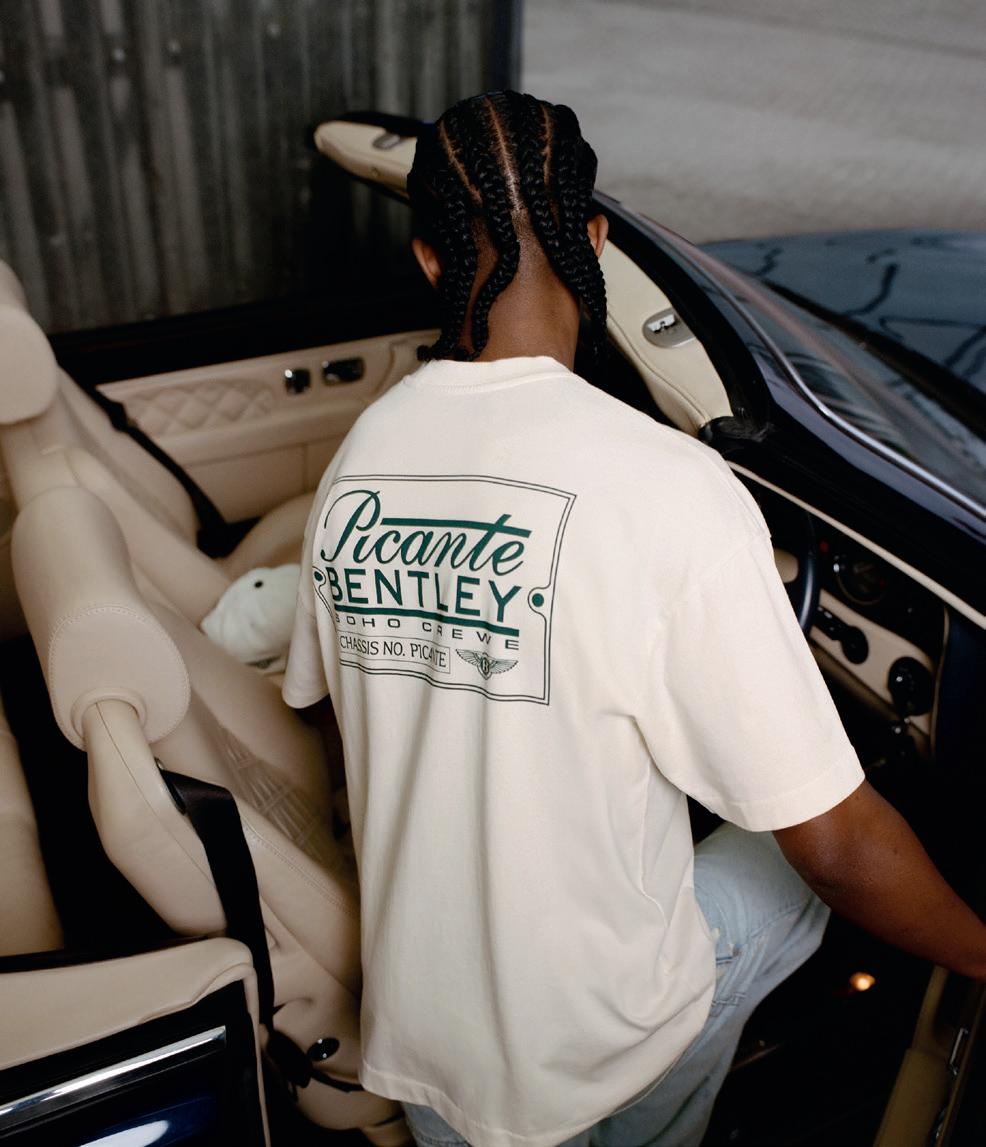
limited-edition item restricted to just 20 pieces. Crafted from premium cowhide leather, the jacket features Bentley’s iconic wings blind embossed on its exterior. The interior showcases Bentley’s signature diamond-in-diamond quilting, reminiscent of the marque’s luxurious car interiors. Designed to evoke the charm of a cherished heirloom, the jacket is finished with a numbered plaque in the inner pocket, symbolising its exclusivity and its potential to be passed down through generations.
The creative synergy between Bentley and PICANTE is evident in the thoughtful execution of the collection. Jude Taylor, PICANTE’s co-founder, spoke of the inspiration drawn from Bentley’s heritage, stating, “We love that Bentley has such a deep-rooted British heritage and it is something that we, as a brand, aspire towards. It has been amazing to work with them on this project and gain an understanding of the level of craft behind these iconic cars.”
For Saam Zonoozi, PICANTE’s co-founder, the project was an opportunity to delve into Bentley’s storied past. “We dug deep into the history of Bentley Motors, exploring their evolution over 100 years and pulling from their extensive archives. Taking these references and translating them into a graphic that speaks to our brand,” he explained. Notable design elements include the “Soho Crewe” text, a nod to the origins of both brands, seamlessly blending PICANTE’s urban roots with Bentley’s traditional craftsmanship.
The partnership between Bentley and PICANTE is a testament to the enduring allure of craftsmanship and the shared appreciation for storytelling through design. By reimagining the essence of travel and translating it into wearable luxury, The Open Road Collection offers discerning consumers an opportunity to own a piece of both brands’ legacies.


Rimac Automobili has once again pushed the boundaries of hypercar engineering with the launch of the Nevera R, a 2,107-horsepower masterpiece designed to redefine speed and performance. As the latest evolution in the Nevera line, this bold creation offers an exhilarating blend of precision, power, and cutting-edge technology, setting new standards in the world of high-performance vehicles
RRimac Automobili has unveiled its latest marvel, the Nevera R, a highly anticipated evolution of its groundbreaking Nevera. The Nevera R is a meticulously crafted hypercar designed to push the boundaries of automotive engineering. With an aggressive 2,107 hp, this model sets the standard for highperformance vehicles, elevating the Nevera name into a realm of uncompromising power and precision. As the newest addition to the Rimac family, the Nevera R embodies the company’s philosophy of being radical, rebellious, and relentless—values deeply rooted in its engineering and design DNA.
At the core of the Nevera R lies a reimagined powertrain and battery system, enabling it to outshine its predecessor in straight-line speed. Accelerating to 300 km/h (186 mph) in an astonishing 8.66 seconds, it shatters existing benchmarks. With the integration of next-generation Rimac All-Wheel Torque Vectoring and a more performance-oriented battery pack, the Nevera R refines the driving experience, focusing on exceptional cornering and high-speed control.
Aesthetically, the Nevera R delivers a stunning visual presence. Rimac’s engineers and designers collaborated closely to ensure that every curve and surface was honed for aerodynamic performance without compromising on style. The vehicle’s forward-thrusting stance, complemented by 21-inch rear wheels and 20-inch front wheels, enhances its low, sleek profile.
Horizontal lines at the front emphasise both its striking width and aerodynamic efficiency. By balancing body colour and carbon fibre detailing, Rimac has created a timeless design that mirrors the car’s dynamic capabilities. The addition of a large fixed rear wing, coupled with a newly designed diffuser, increases downforce by 15% and boosts aerodynamic efficiency by 10%. These enhancements, combined with Michelin Cup 2 tyres, improve the vehicle’s grip and handling, reducing understeer by 10% and cutting lap times by 3.8 seconds on the Nardo Handling Track.
The Nevera R’s technical specifications are as impressive as its design. The hypercar reaches a top speed of 412 km/h (256 mph) under controlled conditions and accelerates from 0 to 60 mph in a mere 1.74 seconds. Its quarter-mile time stands at an exceptional 8.23 seconds, further showcasing Rimac’s ability to push the boundaries of automotive performance. All of this is achieved with a new 108 kWh battery pack that delivers enhanced power and efficiency in a lighter configuration.
What sets the Nevera R apart from other hypercars is not only its speed but also its refined driving dynamics. The new Rimac All-Wheel Torque Vectoring system (R-AWTV) has been reengineered to deliver sharper, tighter cornering performance. Whether on challenging B roads or a racing circuit, the Nevera R offers an unparalleled level of driver feedback. Increased downforce provides greater stability, while the re-tuned traction control system ensures predictability, even in wet conditions. The introduction of negative camber, combined with the highgrip Michelin Cup 2 tyres, pushes the vehicle’s handling to unprecedented levels, giving drivers a confident, engaging experience.
Enhancements extend to the braking system as well. The Nevera

R is equipped with advanced EVO2 carbon ceramic brakes featuring a silicone matrix layer. This innovation ensures the hypercar maintains exceptional stopping power while improving cooling and durability under extreme conditions. These high-performance brakes complement the car’s other cutting-edge systems, creating a seamless blend of power and control.
Visually, the Nevera R continues Rimac’s tradition of bold design. Launched in Nebula Green, this new model is a tribute to the Time Attack’s Lightning Green, showcasing a colour palette that is as striking as the car’s performance. The ultra-customisable interior also reflects the brand’s focus on personalisation, with a variety of new colour and trim options. Painted carbon elements, including the dashboard structure and centre console trims, can be tailored to match the vehicle’s exterior or the customer’s individual taste.
In a nod to exclusivity, Rimac plans to produce only 40 units of the Nevera R, making this hypercar not only a technological achievement but also a rare collectible for discerning enthusiasts.
“When we developed the Nevera, an important part of the brief was that it should be a Grand Tourer. We made sure it was spacious, comfortable and finely balanced between thrilling and accessible. Ultimately what we achieved struck that balance perfectly; a highperformance record-breaking car that could set new benchmarks at the Nürburgring”
Mate Rimac, Founder and CEO of Rimac Group


Ferrari has once again pushed the boundaries of automotive engineering with the unveiling of the F80 hypercar. Marrying cuttingedge Formula 1 and Le Mans technology, this electrified masterpiece delivers an astounding 1184bhp, making it the most powerful road car in the brand's illustrious history



FFerrari has unveiled its latest marvel, the F80 hypercar, which stands as the most powerful road car ever produced by the iconic Italian manufacturer. With an electrified 3.0-litre twin-turbo V6 powertrain drawing inspiration from Ferrari’s triumph in both Formula 1 and Le Mans, the F80 is set to redefine performance in the luxury automotive market. Its extraordinary 1184bhp eclipses any of Ferrari’s predecessors, signalling a bold new chapter in the company’s history of innovation.
Priced at £3 million, the F80 will be limited to a mere 799 units—all of which are already spoken for—further enhancing its exclusivity and appeal among collectors and enthusiasts. It continues Ferrari’s tradition of producing high-performance vehicles with cutting-edge technology, following in the footsteps of the legendary F40, F50, Enzo, and LaFerrari.
The core of the F80’s unprecedented power is its newly overhauled V6 engine, derived from Ferrari’s 296 GTB model, but heavily modified to produce an impressive 888bhp. Augmented by three electric motors—two on the front axle and one on the rear—this advanced system adds a further 296bhp. The rear motor, a Formula 1-inspired energy recovery unit (MGU-K), offers 94bhp alone, filling in power gaps and enhancing acceleration. These combined components enable the F80 to achieve a remarkable 0-62mph time of 2.15 seconds and 0-124mph in just 5.75 seconds, outperforming rivals such as McLaren’s W1 and Mercedes-AMG One.
The inclusion of F1-derived ‘E-turbos’ marks a first for Ferrari, with the use of an ‘MGU-H’ heat recovery system that minimises turbo lag and sharpens throttle response. Ferrari has also fitted the F80 with a selection of driving modes, including Hybrid, Performance, and Qualify, which are controlled via the eManettino switch on the steering wheel. Notably, the F80 forgoes a full electric mode, with its battery instead

used to support peak performance during moments of high demand, such as when navigating challenging tracks.
Aerodynamic Mastery
Aerodynamics play a pivotal role in the F80’s capabilities. Ferrari has drawn from its extensive motorsport expertise to develop a car that is as aerodynamically efficient as it is powerful. The car’s underbody design borrows heavily from Formula 1, while the front of the vehicle features an aggressive ‘S-Duct’ that channels air efficiently over the cabin and towards the rear, enhancing downforce.
At the rear, a striking active wing not only adjusts its height but also its angle to optimise downforce and reduce drag, working in tandem with the expansive rear diffuser. These innovations collectively provide the F80 with a maximum of 1000kg of downforce at 155mph, including 460kg generated solely by the front end. This level of aerodynamic efficiency places the F80 on par with the McLaren W1, further cementing Ferrari’s standing as a leader in high-performance engineering.
Chassis and Construction
Despite its significant power output, the F80 remains agile thanks to its lightweight construction. Its chassis is built from a combination of carbon fibre, titanium, and aluminium, making it 60kg lighter than its predecessor, the LaFerrari. Measuring 4840mm in length, 2060mm in width, and 1130mm in height, the F80 is larger than McLaren’s W1 but remarkably retains a weight of just 1525kg.
Ferrari has also introduced a cutting-edge active suspension system, co-developed with Multimatic, which is crucial in maintaining the vehicle’s stability during high-speed cornering. The suspension, supported by four 48V actuators, keeps the centre of gravity low and the car balanced, ensuring exceptional performance even under the most demanding driving conditions. Design Philosophy


Ferrari’s design language for the F80 is strikingly modern, eschewing nostalgia in favour of a futuristic aesthetic. Designer Flavio Manzoni described the inspiration behind the car’s bold exterior as rooted in the world of science fiction, with visual cues that evoke spaceships. However, Ferrari aficionados will note familiar touches, such as the pronounced front wheel arches reminiscent of the F40 and Enzo, and a rear that subtly nods to the classic 330 P3.

Inside the cabin, the driver-centric layout reflects Ferrari’s focus on performance. The asymmetrical ‘1+’ seating arrangement prioritises the driver, while the passenger is positioned in a minimalist seat that blends seamlessly into the chassis. The controls, largely physical rather than digital, are designed for ease of use during high-speed driving, a practical touch that underlines the F80’s commitment to functionality as well as luxury.



MMcLaren continues to redefine automotive performance with the unveiling of its latest creation, the W1, a remarkable addition to its illustrious ‘1’ series. Known for its innovative approach and commitment to engineering excellence, McLaren has ensured that the W1 upholds the legacy of its predecessors, standing at the pinnacle of automotive technology.
The lineage of McLaren’s ‘1’ series cars is illustrious, characterised by groundbreaking performance figures and unparalleled engineering. The F1, introduced in 1992, boasted a staggering 627hp from its 6.1-litre V12 engine, achieving a top speed of 240mph at a weight of just 1,260kg. A couple of decades later, the P1 elevated the standard even further, offering a combined 916hp from its hybrid 3.8-litre twin-turbocharged V8, reaching 124mph in a mere 6.8 seconds before its top speed was electronically capped at 217mph.
The W1 continues this proud tradition, embodying McLaren’s
relentless pursuit of performance. Its designation pays tribute to the manufacturer’s championship mindset while pushing the boundaries of what is achievable in a road-legal vehicle. With an astounding output of 1,275hp and 988lb ft of torque derived from a new electrified 4.0-litre V8, the W1 accelerates from 0-186mph in a time nearly four seconds quicker than its predecessor. This remarkable feat positions it as the fastest lapping and quickest accelerating road-legal McLaren to date.
In designing the W1, McLaren has adhered to its established philosophy of aerodynamics, employing the most advanced active aero package it has ever created for a road car. The vehicle’s aesthetics, while perhaps not as flamboyant as some competitors, exude a certain understated elegance. Upon closer inspection, the design reveals a depth of engineering that speaks volumes about its capabilities. The new Aerocell carbon fibre monocoque is a testament to this, being not only the lightest structure McLaren has produced but also instrumental in achieving the car’s impressive aerodynamic efficiency.
A raised floor design eliminates the need for a front subframe, directly mounting the inboard front suspension. This innovation reduces the wheelbase by almost 70mm, contributing to a more dynamic handling profile. Furthermore, the car features a fully active front wing that rivals the performance gains of conventional

rear wings in many supercars. The extensive aerodynamic elements include a rear diffuser that required a unique 3-degree incline for the powertrain, a roof-mounted flow diverter, and the groundbreaking Active Long Tail.
In Race mode, the W1’s transformation is nothing short of remarkable. The Active Long Tail extends 300mm rearward, effectively enhancing the car’s aerodynamic profile and increasing downforce significantly—up to 1,000kg at 174mph—while simultaneously reducing drag by 20% compared to the McLaren Senna. This capability exemplifies the profound knowledge McLaren has drawn from its Formula 1 experience, allowing the W1 to thrive under the demanding conditions of high-speed driving.
The W1 also distinguishes itself with its RWD configuration, which McLaren believes sufficiently manages grip and load without necessitating an all-wheel-drive system. This confidence in the vehicle’s handling is further supported by its extraordinary powerto-weight ratio of 911hp per tonne, the highest claimed by the manufacturer for any of its supercars. This impressive output is generated by the clean-sheet design of the MHP-8 engine, a flat-plane crank V8 that produces 928hp and 664lb ft of torque, representing the most power-dense engine McLaren has ever manufactured.
In terms of hybrid capabilities, the W1 offers a limited electriconly range, allowing for quiet short-distance travel. With a battery capacity of 1.384kWh, the car can operate silently for approximately 1.5 miles. The E-module, weighing just 20kg, complements the V8, contributing an additional 347hp and 324lb ft of torque when required. The vehicle defaults to Comfort mode, with hybrid power becoming fully available in Sport mode and refined further in Race mode.
The car’s performance is matched by its stopping power. Featuring the McLaren Carbon Ceramic Racing+ (MCCR+) braking system, the W1 can halt from 124mph in just 100 metres and from 62mph in 29 metres, ensuring exceptional control and responsiveness under all driving conditions.
A notable change in the W1’s design is the introduction of

anhedral doors, a departure from McLaren’s traditional dihedral doors. This new design not only improves aerodynamics but also enhances accessibility, offering a more user-friendly experience for occupants. Inside, the cabin is designed to be remarkably spacious, allowing for an exceptional view out, with the interior layout reflecting a blend of luxury and practicality.
While the W1 embodies the essence of a track-focused vehicle, McLaren has ensured that it remains user-friendly and practical for everyday driving. The combination of advanced technology and thoughtful design positions the W1 as not just a hypercar, but a versatile machine that owners can enjoy regularly.
Priced from £2 million, the W1 has already garnered significant interest, with all 399 units pre-allocated prior to the press reveal. As with its legendary predecessors, the W1 is expected to maintain the high standards set by McLaren, but only time will tell if it can live up to the legacy of its forebears.



Patek Philippe continues to redefine luxury watchmaking with the introduction of its groundbreaking Cubitus collection. This new line embodies a harmonious blend of daring design and timeless elegance, showcasing an innovative square-shaped case with rounded corners and striking dials. Each model reflects Patek Philippe's commitment to craftsmanship and creativity, offering discerning collectors a sophisticated reinterpretation of the "elegant sporty" style that sets a new standard in the world of haute horlogerie

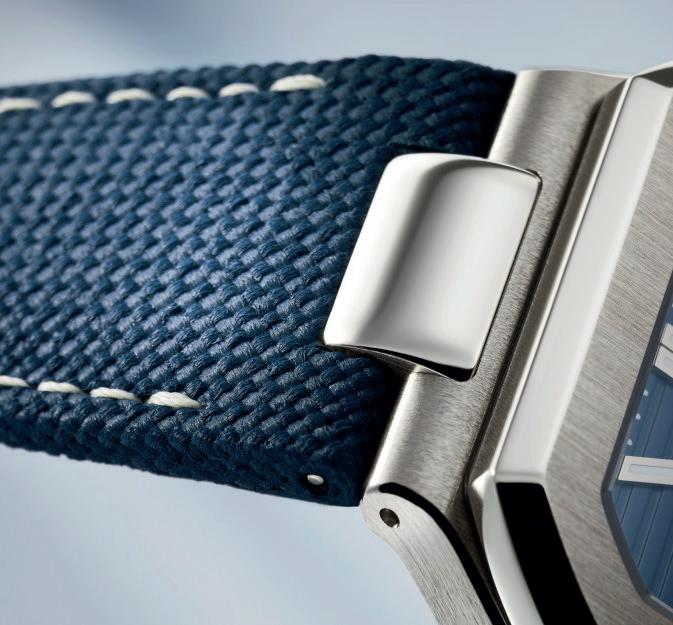

PPatek Philippe has launched an innovative collection that encapsulates the essence of “elegant sporty” style, showcasing a unique fusion of boldness and sophistication. The new Cubitus collection introduces a square-shaped case with gracefully rounded corners and a distinctive dial featuring horizontal relief embossing. This collection debuts in three striking variations, each exuding its own character: the technically advanced Cubitus Instantaneous Grand Date, Day and Moon Phases, Reference 5822P-001 in platinum; the vintage-inspired two-tone Cubitus Reference 5821/1AR-001 in steel and rose gold with a blue sunburst dial; and the refined Cubitus Reference 5821/1A-001 in steel, embodying the essence of sporty elegance with an olivegreen sunburst dial.
Patek Philippe, celebrated as a master of complications, has also made significant strides in design, crafting timepieces that are both aesthetically pleasing and instantly recognisable within the horological realm. The spirit of creativity drives Patek Philippe, enabling the maison to explore a vast spectrum of styles that resonate with a diverse clientele. Each watch serves as a platform for the brand to showcase its vision of fine watchmaking, while also responding to the varied tastes of its discerning customers.
The legacy of Patek Philippe is reflected in its illustrious collections, each distinguished by unique characteristics. The Calatrava, launched in 1932, set the standard for round wristwatches. Subsequent designs, such as the Golden Ellipse of 1968, the Nautilus of 1976, and the Aquanaut of 1997, have continually demonstrated the brand’s ability to blend timelessness with contemporary appeal. Each model, with its clean lines and classic forms, transcends fleeting trends while maintaining its charm and allure through the years.
In its pursuit to redefine “elegant sporty” style, Patek Philippe has introduced an original geometric form with the Cubitus collection, opting for a square shape as a foundation. Historical visits to the Patek Philippe Museum in Geneva reveal a rich history of quadrangular case designs, particularly during the Art Deco period. However, the new Cubitus collection features an innovative design that merges square, circular, and octagonal elements, exemplifying a bold yet
subtle aesthetic.
The collection’s case, measuring 45 mm in diameter, boasts an exceptionally slender profile that enhances its timeless elegance. Distinctive features include two attachments flanking the case and a two-part construction that adds to its refinement. Each watch is finished with precision, requiring approximately 55 manual operations, showcasing the meticulous craftsmanship that defines Patek Philippe.
To accentuate the sporty character of the Cubitus collection, Patek Philippe has introduced dials enriched with horizontal relief embossing, which create dynamic light reflections. This signature design element is mirrored in the rotors and mini-rotors of the movements that power the Cubitus models, proudly displaying the emblem of the Genevan manufacture, the Calatrava cross.
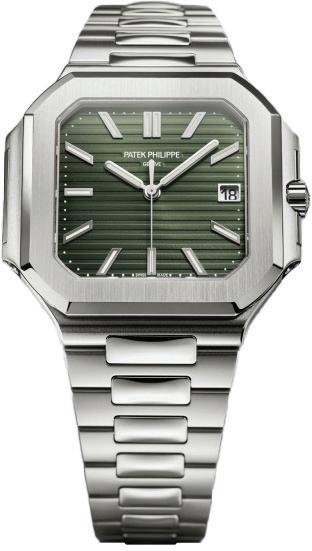
The Cubitus Instantaneous Grand Date, Day and Moon Phases Reference 5822P-001 stands out as a technical marvel, featuring an original movement that allows for instantaneous displays of the date, moon phase, and day of the week. With six patent applications pending for this sophisticated mechanism, Patek Philippe has crafted a new calibre 240 PS CI J LU self-winding movement that ensures precision and alignment in its displays, all changing in just 18 milliseconds. The display’s large-date aperture at 12 o’clock and the dual indications at 7 o’clock are complemented by a sleek design and impeccable legibility.
Moreover, the collection includes new Cubitus cufflinks that echo the watch design, featuring a white-gold frame centred around a blue sunburst motif adorned with horizontal relief decoration, reinforcing the luxurious allure of the collection.
The two-tone Cubitus Reference 5821/1AR-001 marries rose gold and steel for a sophisticated touch. Its elegant, slender profile and innovative square design are complemented by a blue sunburst dial, which harmoniously balances style and readability. This model is powered by the caliber 26-330 S C self-winding movement, showcasing Patek Philippe’s commitment to technical excellence and aesthetic appeal.
Lastly, the sporty yet elegant Cubitus Reference 5821/1A-001 in steel features a captivating olive-green sunburst dial and integrates seamlessly into the modern lifestyle. This model, like its counterparts, is equipped with a robust self-winding movement and a meticulously designed bracelet that ensures both comfort and security.

Luxury watchmaking reaches new heights as OMEGA unveils its latest masterpiece. The prestigious Swiss manufacturer has reimagined its iconic Seamaster Diver 300M collection, presenting an exceptional series that combines advanced engineering with sophisticated design. This strategic evolution of OMEGA's celebrated diving timepiece promises to captivate both collectors and enthusiasts
A distinguished evolution in luxury timepiece engineering has emerged from OMEGA’s prestigious workshops. The Swiss watchmaker’s latest iteration of its celebrated Seamaster Diver 300M collection masterfully combines technical excellence with refined aesthetics, delivering a sophisticated series that pays homage to its rich heritage whilst embracing contemporary innovation.
The collection’s debut made headlines when OMEGA ambassador Daniel Craig showcased the stainless steel variant with its striking black finish at the Olympic Games Paris 2024. This strategic preview generated significant anticipation among horological enthusiasts and collectors worldwide, setting the stage for what promises to be a remarkable chapter in OMEGA’s storied history.
Drawing inspiration from the sophisticated Seamaster Diver 300M 007 Edition, featured prominently in No Time To Die, the new collection represents a thoughtful departure from OMEGA’s recent ceramicfocused designs. The 42 mm timepieces incorporate a carefully considered domed sapphire crystal, introducing a subtle vintage element that resonates with connoisseurs of classical watchmaking.
The collection presents two distinct variations in stainless steel, each offering unique aesthetic attributes. The first features a black aluminium bezel complemented by a black aluminium dial, distinguished by meticulously laser-engraved wave patterns. The second combines a grade 5 titanium bezel with a brushed PVD stainless steel dial, creating a contemporary interpretation of OMEGA’s design philosophy. Both models are available with either mesh bracelets—echoing the sophisticated styling of the Bond timepiece—or rubber straps, providing versatility for both formal and athletic pursuits.
This latest release builds upon the foundational success of the original 1993 Seamaster Diver 300M, which marked OMEGA’s triumphant return to professional diving watches following their pioneering contributions during the 1960s and 1970s. Signature elements including the wave-patterned dial, skeletonized hands, and the practical helium escape valve positioned at 10 o’clock remain integral to the design, ensuring continuity with this distinguished lineage.
The new Seamaster Diver 300M collection represents a significant milestone in OMEGA’s continuing journey of horological excellence, offering discerning professionals and enthusiasts alike a perfect synthesis of heritage, innovation, and sophisticated functionality.

